King Of Poland on:
[Wikipedia]
[Google]
[Amazon]
 , Unknown
, Unknown
, Unknown
, Legendary founder of the Polish nation according to folktales, tribal leader
,
, Unknown
, Unknown
, Unknown
, Legendary founder of the Polish nation according to folktales, tribal leader
,
also Krak or Grakch
, ,
, Unknown
,
, Legendary founder of
,
, Unknown
,
, Legendary founder of
, ,
,
Son of Krakus I , Unknown , , Succession ,
, ,
,
Son of Krakus I, brother of Krakus II , Unknown , , Succession ,
also Wąda
, ,
,
Daughter of Krakus, sister of Krakus II and Lech II , Unknown , , Succession ,
also Leszek
,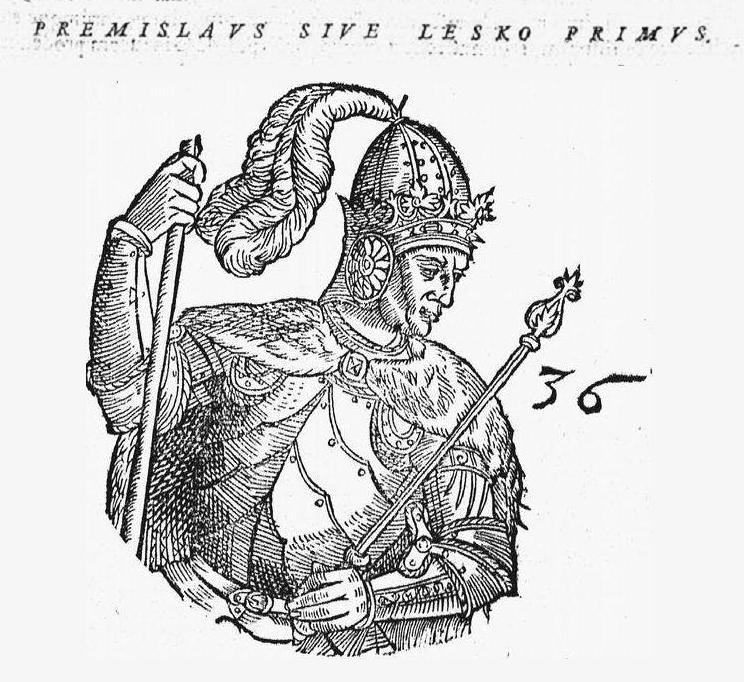 ,
,
, Unknown ,
, Birth name Przemysław, defeated the Hungarians and was crowned
Elected ,
, ,
,
Presumed son of
, ,
,
Presumed son of Leszko II , Unknown , , Succession , Popielids , - , Duke
, ,
,
Presumed son of Leszko III , Unknown , , Succession , Popielids , - , Duke
, ,
,
Presumed son of Popiel I , NN, A German Princess , , A legendary ruler dethroned by Piast. He appears (without the number) in the oldest Polish chronicle, '' Gesta principum Polonorum'' from the early 12th century
Succession , Popielids , - ,
,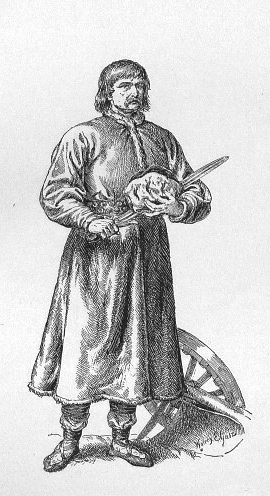 ,
,
Son of Chościsko , Rzepicha , , Legendary founder of the Piast dynasty. He appears in the oldest Polish chronicle, '' Gesta principum Polonorum'' from the early 12th century , Piast
also Ziemowit
9th century ,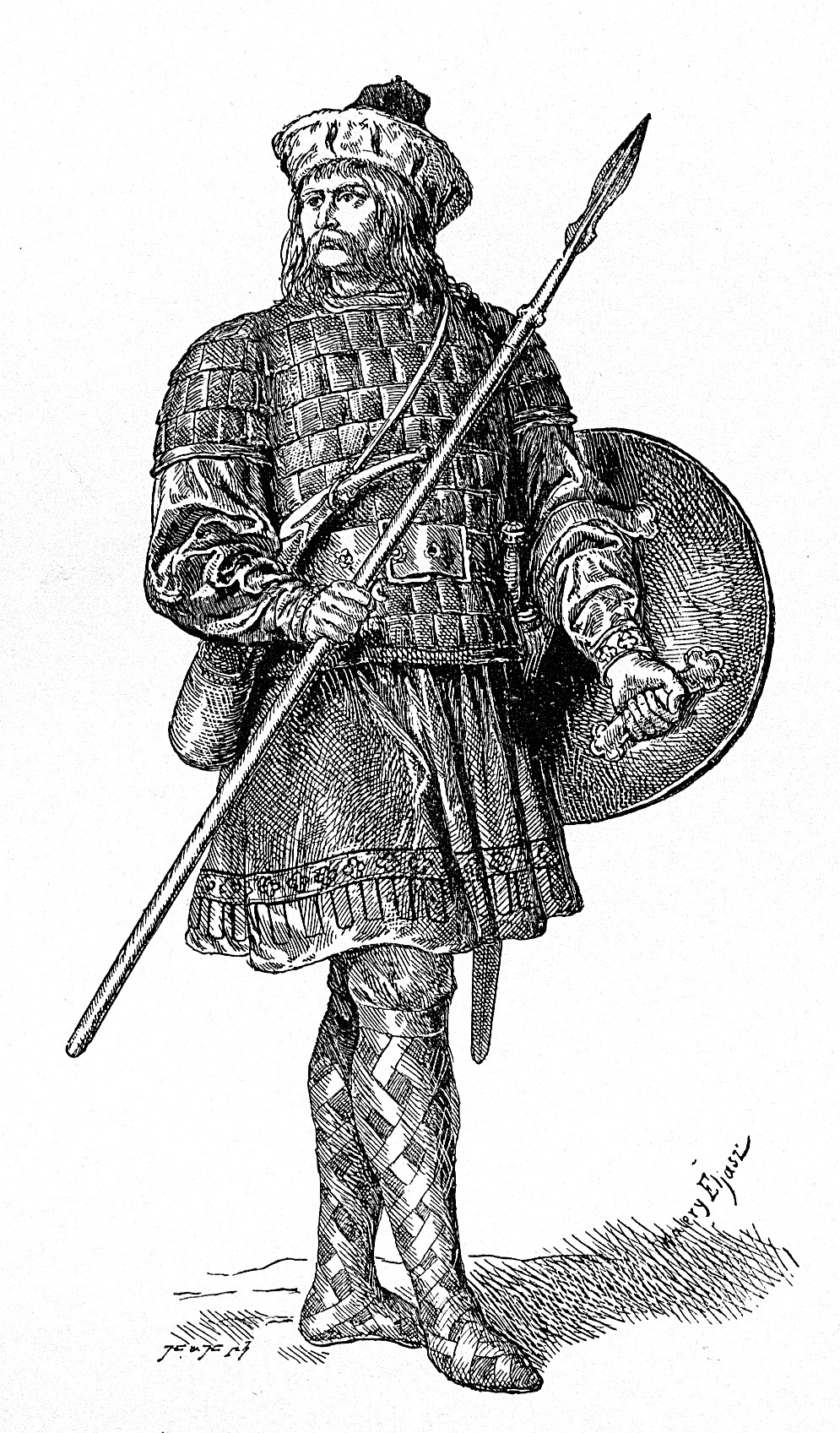 , 9th century
, 9th century
Presumed son of Piast the Wheelwright
and Rzepicha , Unknown , 9th century , Named the Duke of the Polans after his father, Piast the Wheelwright, refused to take the place of legendary Duke Popiel
Elected , Piast , , - , Duke
also Leszek or Lestko
9th century
10th century , , 880
, 880
Presumed son of Siemowit , Unknown , 950 , Named the Duke of the Polans after succeeding his father
Succession , Piast , , - , Duke
also Ziemomysł
Latin: Zemomislaus
10th century
/960 , ,
,
Presumed son of Lestek , Unknown , 960 , Named the Duke of the Polans after succeeding his father
Succession , Piast ,
Mieszko I
Latin: ''Misico, dux Wandalorum''
960
25 May 992
''( years)'' ,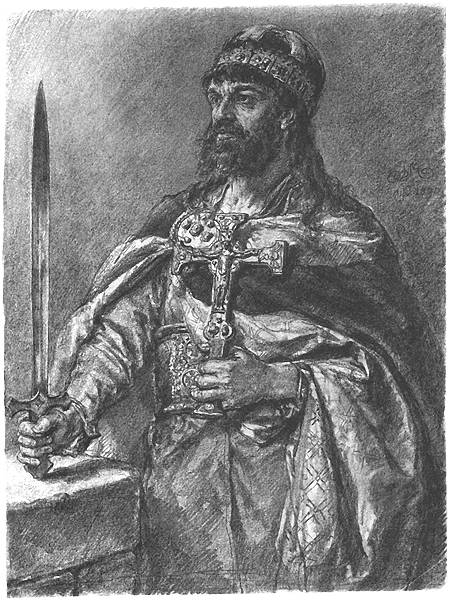 ,
,
Son of semi-legendary Siemomysł ,
2 children
Oda of Haldensleben
3 children , 25 May 992
Aged about 62 , First Christian ruler of Poland
Succession , Piast , - , King
Bolesław I the Brave
also Boleslaus I the Great
pl, Bolesław I Chrobry (Wielki)
9921025 (as duke)
18 April 102517 June 1025 (as king)
''( years)'' ,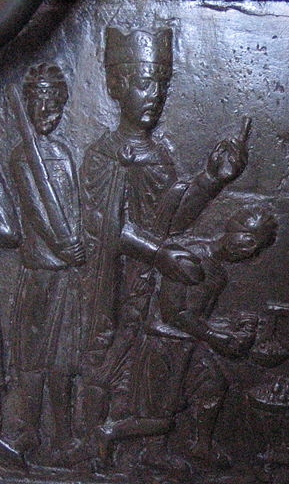 ,
,
Son of Mieszko I and
Judith of Hungary
Emnilda of Lusatia
Oda of Meissen , 17 June 1025
Aged about 58 , First crowned king
Succession , Piast , - , King
Mieszko II Lambert
25 December 10251031
''( years)'' , ,
,
Son of Bolesław I the Brave and Emnilda of Lusatia , Richeza of Lotharingia, 4 children , 10/11 May 1034
Aged about 44 , Crowned king
Succession
Deposed as a result of the Pagan Rebellion , Piast , - , Duke
Bezprym
10311032 ''( years)'' ,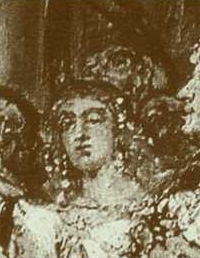 ,
,
Son of Bolesław I the Brave and Judith of Hungary , Unknown ,
Aged about 46 , Country divided, ruler of a Duchy
Usurped , Piast , - , Duke
Otto
10321033 ''( years)'' , ,
,
Son of Bolesław I the Brave and Emnilda of Lusatia , Unknown ,
Aged about 33 , Country divided, ruler of a Duchy
Usurped , Piast , - , Duke
Dytryk
also Dietrich and Theoderick
10321033 ''( years)'' , ,
,
Son of
Aged about 41 , Country divided, ruler of a Duchy
Usurped , Piast , - , Duke
Mieszko II Lambert
10331034
''( years)'' , ,
,
Son of Bolesław I the Brave and Emnilda of Lusatia , Richeza of Lotharingia, 4 children , 10/11 May 1034
Aged about 44 , Restored as duke , Piast , - , Duke
pl, Bolesław Zapomniany
10341038/1039
''( years)'' , , before 1016
, before 1016
Presumed son of Mieszko II Lambert , Unknown , 1038/1039 , Semi-legendary, existence disputed , Piast , - , Duke
Casimir I the Restorer
pl, Kazimierz I Odnowiciel
1034/10401058
''( years)'' ,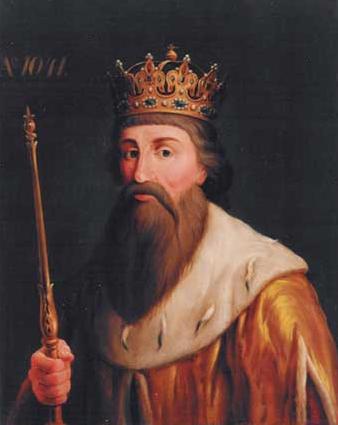 , 25 July 1016
, 25 July 1016
Son of Mieszko II Lambert and Richeza of Lotharingia , Maria Dobroniega, 5 children , 19 March 1058
Aged 41 , Made prince in 1034, returned from abroad in 1040
Restoration , Piast , - , King
Bolesław II the Generous
pl, Bolesław II Szczodry (Śmiały)
10581076 (as duke)
26 December 10761079 (as king)
''( years)'' , , 1042
, 1042
Son of Casimir I the Restorer and Maria Dobroniega , Wyszesława, 1 son , 2/3 April 1081
Aged about 39 , Crowned king in 1076
Deposed and exiled in 1079 after slaying Saint Stanislaus , Piast , - , Duke
Władysław I Herman
10794 June 1102
''( years)'' , , 1044
, 1044
Son of Casimir I the Restorer and Maria Dobroniega , Przecława
Judith of Bohemia
Płock
Aged about 58 , Succeeded brother after his exile , Piast , - , Duke
Zbigniew
11021107
''( years)'' , ,
,
Son of Władysław I Herman and Przecława (?) , Unknown , 8 July 1113
Aged about 40 , Succession , Piast , - , Duke
also Boleslaus III
pl, Bolesław III Krzywousty
11071138
''( years)'' , , 20 August 1086
, 20 August 1086
Płock
Son of Władysław I Herman and Judith of Bohemia , Zbyslava of Kiev
Salomea of Berg , 28 October 1138
Sochaczew
Aged 52 , Succession
His death led to the fragmentation of Poland , Piast
Władysław II the Exile
pl, Władysław II Wygnaniec
11381146
''( years)'' , , 1105
, 1105
Son of
Altenburg
Aged 54 , Succession
Deposed and exiled , Piast , - , High Duke
Bolesław IV the Curly
pl, Bolesław IV Kędzierzawy
11461173
''( years)'' , ,
,
Son of
Aged about 51 , Succeeded exiled half-brother , Piast , - , High Duke
Mieszko III the Old
pl, Mieszko III Stary
11731177
''( years)'' , ,
,
Son of
Aged about 75 , Succession
Deposed by brother in 1177 , Piast , - , High Duke
Casimir II the Just
pl, Kazimierz II Sprawiedliwy
11771190
''( years)'' , ,
,
Son of
Aged about 56 , Usurped power from brother , Piast , - , Mieszko III the Old
11901190 , , –
, –
, –
, Usurped
, Piast
, -
, Casimir II the Just
, –
, –
, –
, Usurped
, Piast
, -
, Casimir II the Just
11901194 , , –
, –
, –
, Usurped
, Piast
, -
, High Duke
, –
, –
, –
, Usurped
, Piast
, -
, High Duke
Leszek I the White
pl, Leszek Biały
11941198
''( years)'' , , /1185
, /1185
Son of Casimir II the Just and
Marcinkowo Górne
Aged about 43 , Succession , Piast , - , Mieszko III the Old
11981199 , , –
, –
, –
, Usurped
, Piast
, -
, Leszek I the White
, –
, –
, –
, Usurped
, Piast
, -
, Leszek I the White
11991199 , , –
, –
, –
, Restored
, Piast
, -
, Mieszko III the Old
, –
, –
, –
, Restored
, Piast
, -
, Mieszko III the Old
11991202 , , –
, –
, –
, Usurped
, Piast
, -
, High Duke
, –
, –
, –
, Usurped
, Piast
, -
, High Duke
Władysław III Spindleshanks
pl, Władysław III Laskonogi
12021206
''( years)'' , ,
,
Son of Mieszko III the Old and
Aged about 64 , Usurped , Piast , - , Leszek I the White
12061210 , , –
, –
, –
, Restored
, Piast
, -
, High Duke
, –
, –
, –
, Restored
, Piast
, -
, High Duke
Mieszko IV Tanglefoot
pl, Mieszko IV Plątonogi
12101211
''( years)'' , ,
,
Son of Władysław II the Exile and Agnes of Babenberg , Ludmila, 5 children , 16 May 1211
Aged about 81 , Usurped , Piast , - , Leszek I the White
12111227
''( years)'' , , –
, –
, –
, Restored
, –
, –
, –
, Restored
Murdered in 1227 , Piast , - , Władysław III Spindleshanks
12271229 , , –
, –
, –
, Usurped
, Piast
, -
, High Duke
, –
, –
, –
, Usurped
, Piast
, -
, High Duke
Konrad I of Masovia
12291232
''( years)'' ,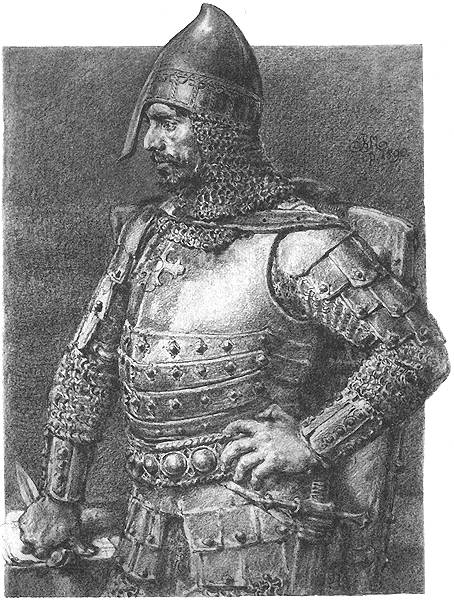 , /1188
, /1188
Son of Casimir II the Just and
Aged about 60 , Usurped , Piast , - , High Duke
Henry I the Bearded
pl, Henryk I Brodaty
12321238
''( years)'' , , /1188
, /1188
Głogów
Son of Bolesław I the Tall and Christina (?) ,
Krosno Odrzańskie
Aged about 73 , Usurped , Piast , - , High Duke
pl, Henryk II Pobożny
12381241
''( years)'' , ,
,
Głogów
Son of Henry the Bearded and
Legnickie Pole
Aged about 45 , Succession
Killed at the Battle of Legnica , Piast , - , High Duke
Bolesław II the Horned
pl, Bolesław II Rogatka
12411241 , , /1225
, /1225
Głogów
Son of
Euphemia of Pomerania
Sophia of Dyhrn , 26 December 1278
Deposed , Piast , - , High Duke
Konrad I of Masovia
12411243
''( years)'' , , /1188
, /1188
Son of Casimir II the Just and
Aged about 60 , Usurped , Piast , - , High Duke
Bolesław V the Chaste
pl, Bolesław V Wstydliwy
12431279
''( years)'' ,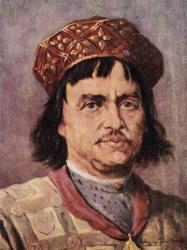 , 21 June 1226
, 21 June 1226
Stary Korczyn
Son of Leszek I the White and Grzymisława of Luck , Kinga of Poland, no children , 7 December 1279
Aged 52 , Restored as rightful Duke , Piast , - , High Duke
Leszek II the Black
pl, Leszek Czarny
12791288
''( years)'' , ,
,
Brześć Kujawski
Son of Casimir I of Kuyavia and Constance of Wrocław , Gryfina of Halych , 30 September 1288
Aged about 47 , Succession , Piast , - , High Duke
Henryk IV Probus
English: ''Henry the Righteous''
pl, Henryk IV Prawy
12881290
''( years)'' , , /1258
, /1258
Son of
Matilda of Brandenburg , 23 June 1290
Aged about 32 , Succession , Piast
English: Premislaus II
12901291 (as duke)
12951296 (as king)
''(1 year)'' ,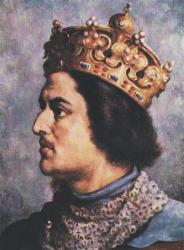 ,
,  , 14 October 1257
, 14 October 1257
Son of Przemysł I of Greater Poland and Elisabeth of Wrocław , Ludgarda of Mecklenburg
Richeza of Sweden
Margaret of Brandenburg , 8 February 1296
Rogoźno
Aged 38 , Crowned king in 1295
Granted Poland its coat of arms
Assassinated , Piast
Wenceslaus II of Bohemia
pl, Wacław II Czeski
12961300 (as High Duke)
13001305 (as King)
''( years)'' , ,
,  , 27 September 1271
, 27 September 1271
Son of
Elisabeth Richeza of Poland , 21 June 1305
Aged 33 , Crowned himself King of Poland in 1300 , Přemyslid , - , ''(Uncrowned)''
pl, Wacław III Czeski
13051306
''(1 year)'' ,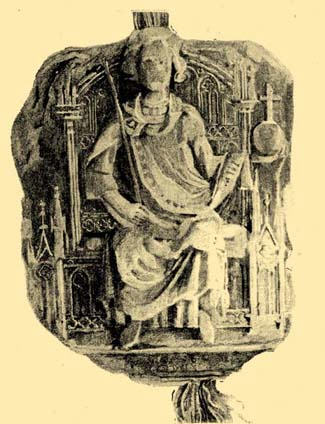 ,
,  , 6 October 1289
, 6 October 1289
Son of Wenceslaus II and Judith of Habsburg , Viola of Teschen , 4 August 1306
Aged 16 , Succession
Uncrowned and assassinated , Přemyslid
Ladislaus the Short
pl, Władysław I Łokietek
13061320
(as High Duke)
20 January 1320
2 March 1333
(as King)
''()'' , ,
,  ,
,
Son of Casimir I of Kuyavia and Euphrosyne of Opole , Jadwiga of Kalisz, 6 children , 2 March 1333
Aged about 73 , Reunited the Kingdom of Poland after fragmentation
Crowned King in 1320 , Piast , - , King
Casimir III the Great
pl, Kazimierz III Wielki
25 April 1333
5 November 1370
''()'' ,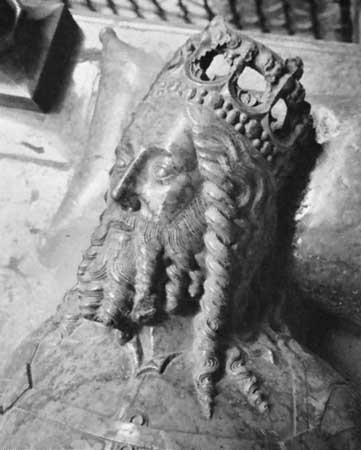 ,
,  , 30 April 1310
, 30 April 1310
Kowal
Son of
Adelaide of Hesse
Christina Rokiczana
Hedwig of Sagan , 5 November 1370
Aged 60 , Succession
Strengthened Poland's position in Europe
Died without a male heir
Last monarch from the Piast Dynasty , Piast
Louis
pl, Ludwik Węgierski
17 November 1370
10 September 1382
''()'' , ,
,  , 5 March 1326
, 5 March 1326
Visegrád
Son of Charles I of Hungary and Elizabeth of Poland , Margaret of Bohemia
Elizabeth of Bosnia , 10 September 1382
Nagyszombat (Trnava)
Aged 56 , Succeeded his uncle, Casimir III, to the Polish throne , Anjou , - , King
Hedwig
pl, Jadwiga
16 October 1384
17 July 1399
''()'' , ,
,  , 3 October 137418 February 1374
, 3 October 137418 February 1374
Daughter of Louis I of Hungary and Elizabeth of Bosnia , Władysław II Jagiełło (Jogaila) , 17 July 1399
Aged 25 , Succeeded her father in Poland
Her husband was crowned ''
Władysław II Jagiełło
lt, Jogaila
4 March 1386
1 June 1434
''()'' , ,
,  , /1362
, /1362
Son of
Anna of Cilli
Elisabeth of Pilica
Sophia of Halshany , 1 June 1434
Gródek
Aged 72–82 , Born a pagan
Previously
Crowned co-ruler with wife Hedwig
Longest-reigning Polish monarch ,
Władysław III
English: Ladislaus III of Varna
pl, Władysław III Warneńczyk
25 July 1434
10 November 1444
''()'' , ,
,  , 31 October 1424
, 31 October 1424
Son of Jogaila and Sophia of Halshany , Unmarried and childless , 10 November 1444
Varna
Aged 20 , Succeeded his father in Poland
Killed at the Battle of Varna
Interregnum until 1447 ,
Casimir IV
pl, Kazimierz IV Jagiellończyk
25 June 1447
7 June 1492
''()'' , ,
,  , 30 November 1427
, 30 November 1427
Son of Jogaila and Sophia of Halshany , Elizabeth of Habsburg, 13 children , 7 June 1492
Aged 64 , Succession
Previously Grand Duke of Lithuania
Divided the Polish-Lithuanian realm between John and Alexander ,
John I Albert
pl, Jan I Olbracht
23 September 1492
17 June 1501
''()'' , ,
,  , 27 December 1459
, 27 December 1459
Son of Casimir IV and Elizabeth of Habsburg , Unmarried and childless , 17 June 1501
Aged 41 , Succeeded his father in Poland
Laid foundation for the Sejm and
Alexander
pl, Aleksander Jagiellończyk
12 December 1501
19 August 1506
''()'' ,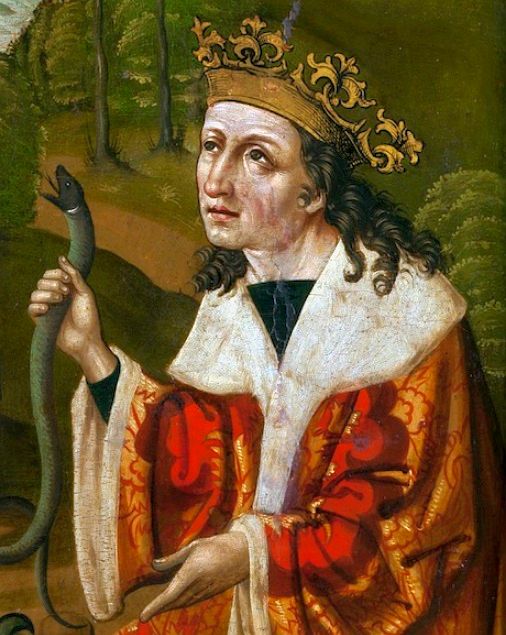 ,
,  , 5 August 1461
, 5 August 1461
Son of Casimir IV and Elizabeth of Habsburg , Helena of Moscow, childless , 19 August 1506
Aged 45 , Succeeded his brother in Poland
Previously Grand Duke of Lithuania
Buried in Lithuania ,
pl, Zygmunt I Stary
8 December 1506
1 April 1548
''()'' , ,
, 1 January 1467
,
, 1 January 1467
Kozienice
Son of Casimir IV and Elizabeth of Habsburg , Barbara Zápolya
Bona Sforza of
Aged 81 , Succeeded his brother in Poland and Lithuania ,
pl, Zygmunt II August
1 April 1548
7 July 1572
''()'' ,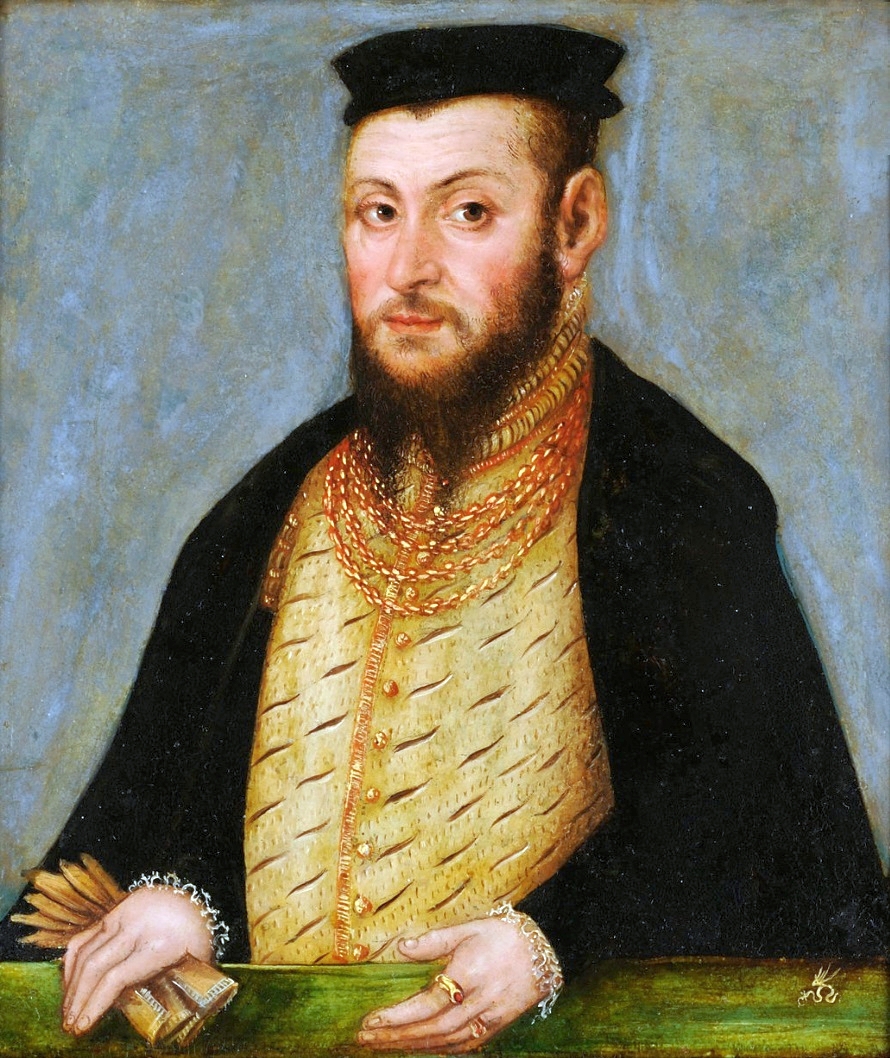 ,
,  , 1 August 1520
, 1 August 1520
Son of Sigismund I and Bona Sforza , Elizabeth of Austria
Catherine of Austria , 7 July 1572
Knyszyn
Aged 51 , Succession
Formation of the
Last male member of the Jagiellonian Dynasty, died heirless ,
Henry
pl, Henryk Walezy
16 May 1573
12 May 1575
''()'' , ,
,  , 19 September 1551
, 19 September 1551
Fontainebleau
Son of Henry II and
Saint-Cloud
Aged 37 , Elected
Left Poland in June 1574 to succeed his
Interregnum until 1575 , Valois , - , Queen
Anna
pl, Anna Jagiellonka
15 December 1575
19 August 1587
''(de facto)''
''()''
9 September 1596
''(de jure)''
''()'' ,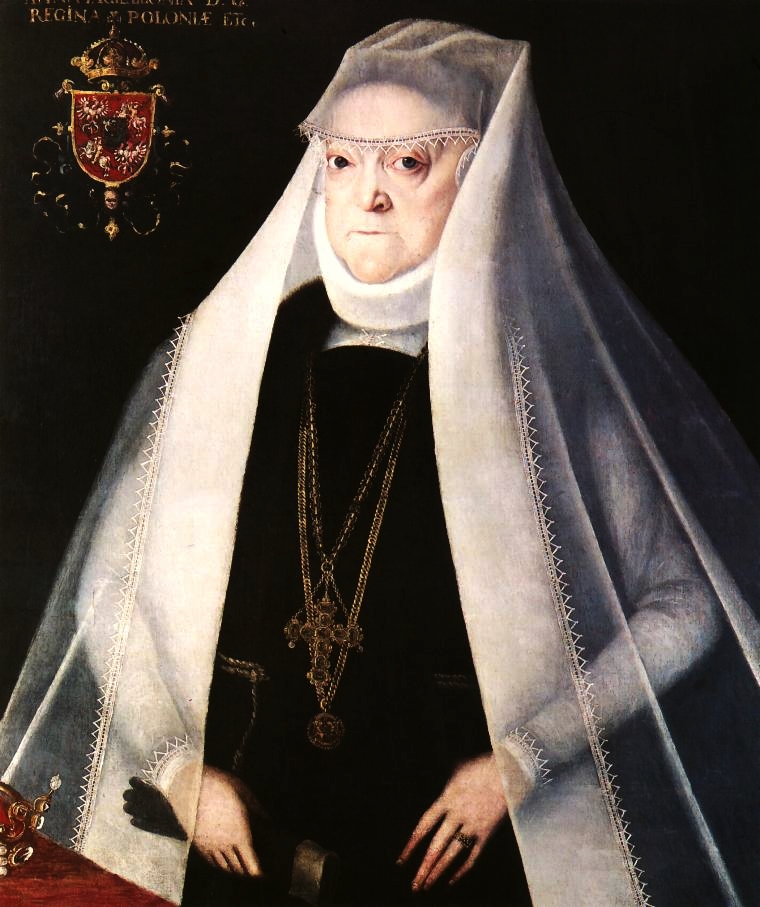 ,
,  , 18 October 1523
, 18 October 1523
Daughter of Sigismund I and Bona Sforza ,
Aged 72 , Elected co-monarch with
Sole ruler until Báthory's arrival and coronation in May 1576
Ruled after husband's death until her nephew was elected ,
pl, Stefan Batory
1 May 1576
12 December 1586
''()'' , ,
,  , 27 September 1533
, 27 September 1533
Szilágysomlyó (Șimleu Silvaniei)
Son of
Aged 53 , Elected as co-monarch with Anna Jagiellon
Previously Prince of
Sigismund III
pl, Zygmunt III Waza
19 August 1587
30 April 1632
''()'' , ,
,  , 20 June 1566
, 20 June 1566
Gripsholm
Son of
Constance of Austria , 30 April 1632
Aged 65 , Elected, nephew of Anna Jagiellon
Transferred capital from
Hereditary King of Sweden until deposition in 1599 , Vasa , - , King
Władysław IV
also Ladislaus IV
pl, Władysław IV Waza
8 November 1632
20 May 1648
''()'' , ,
,  , 9 June 1595
, 9 June 1595
Son of Sigismund III and
Marie Louise Gonzaga , 20 May 1648
Merkinė
Aged 52 , Elective succession
Also titular King of Sweden and elected Tsar of Russia (1610–1613) when the Polish army captured
John II Casimir
pl, Jan II Kazimierz
20 November 1648
16 September 1668
''()'' , ,
,  , 22 March 1609
, 22 March 1609
Son of Sigismund III and Constance of Austria , Marie Louise Gonzaga
Claudine Françoise Mignot (
Aged 63 , Elective succession, succeeded half-brother
Previously a cardinal
Titular King of Sweden
Abdicated , Vasa , - , King
Michael I
pl, Michał Korybut Wiśniowiecki
19 June 1669
10 November 1673
''()'' , ,
,  , 31 May 1640
, 31 May 1640
Biały Kamień
Son of Jeremi Wiśniowiecki and Gryzelda Konstancja Zamoyska , Eleonora Maria of Austria, no children , 10 November 1673
Lwów
Aged 33 , Elected
Born into nobility of mixed heritage, the son of a military commander and governor , Wiśniowiecki , - , King
John III Sobieski
pl, Jan III Sobieski
19 May 1674
17 June 1696
''()'' , ,
,  , 17 August 1629
, 17 August 1629
Olesko
Son of Jakub Sobieski and Teofila Zofia , Marie Casimire d'Arquien, 13 children , 17 June 1696
Wilanów
Aged 66 , Elected
Born into nobility
A successful military commander , Sobieski , - , King
Augustus II
pl, August II Mocny
15 September 1697
1706
''(1st reign, 9 years)'' ,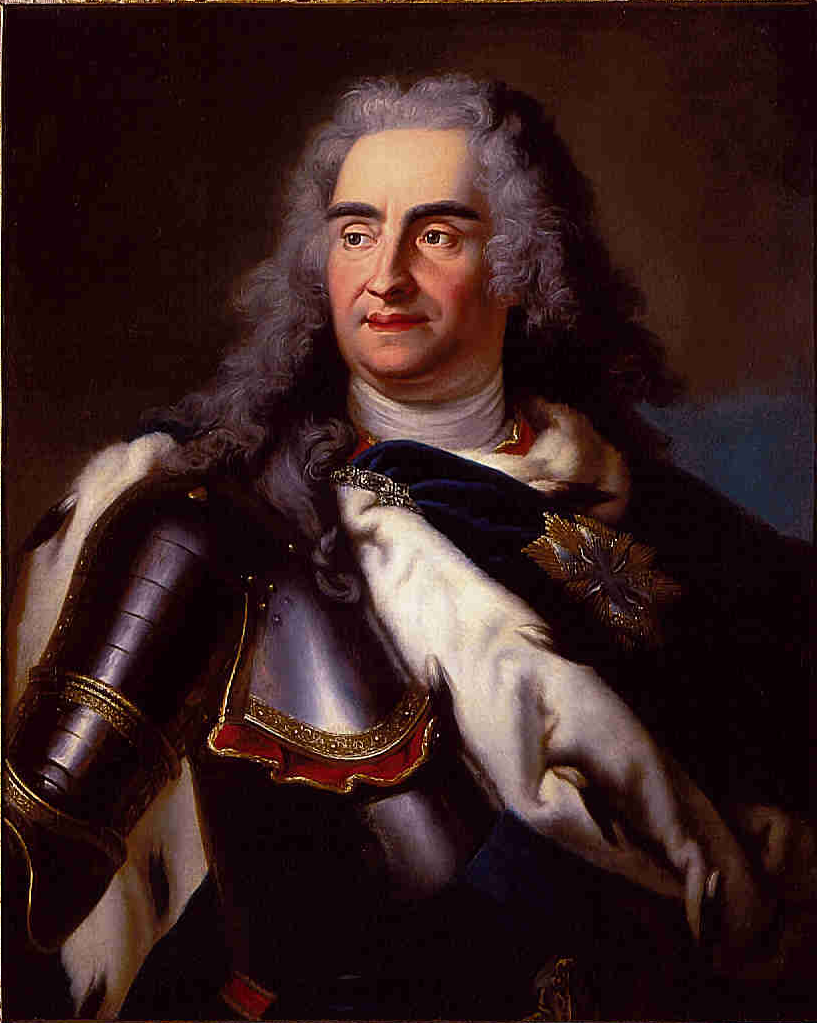 ,
,  , 12 May 1670
, 12 May 1670
Son of
Aged 62 , Elected
Previously Elector and ruler of
Dethroned by Stanislaus I in 1706 during the
Stanislaus I
pl, Stanisław I Leszczyński
12 July 1704
8 July 1709
''(1st reign, )'' , ,
,  , 20 October 1677
, 20 October 1677
Lwów
Son of Rafał Leszczyński and Anna Jabłonowska , Catherine Opalińska, 2 children , 23 February 1766
Lunéville
Aged 88 , Usurped
Nominated as ruler in 1704, crowned in 1705 and deposed predecessor in 1706
Exiled in 1709 ,
Augustus II
pl, August II Mocny
8 July 1709
1 February 1733
''(2nd reign, )'' , ,
,  , 12 May 1670
, 12 May 1670
Son of
Aged 62 , Restored , Wettin , - , King
Stanislaus I
pl, Stanisław I Leszczyński
12 September 1733
26 January 1736
''(2nd reign, )'' , ,
,  , 20 October 1677
, 20 October 1677
Lwów
Son of Rafał Leszczyński and Anna Jabłonowska , Catherine Opalińska, 2 children , 23 February 1766
Lunéville
Aged 88 , Elected
His election sparked the War of the Polish Succession
Deposed by Augustus III in 1736 ,
Augustus III
pl, August III Sas
5 October 1733
5 October 1763
''(30 years)'' , , , 17 October 1696
Son of Augustus II the Strong and Christiane Eberhardine , Maria Josepha of Austria, 16 children , 5 October 1763
Aged 66 , Usurped
Proclaimed King of Poland in 1733, crowned in 1734
Dethroned elected predecessor in 1736 , Wettin , - , King
Stanislaus II Augustus
pl, Stanisław II August
7 September 1764
25 November 1795
''()'' , ,
,  , 17 January 1732
, 17 January 1732
Wołczyn
Son of
Aged 66 , Elected
Born into nobility
Last King of Poland and Grand Duke of Lithuania, his reign ended in the Partitions of Poland , Poniatowski
Frederick Augustus I
pl, Fryderyk August I
9 June 1807
22 May 1815
''()'' , , , 23 December 1750
Son of
1 daughter , 5 May 1827
Aged 76 ,
Designated as a king of Poland by General Confederation of the Kingdom of Poland, 1812. , Wettin
"Półksiężyc, orzeł, lew i smok. Uwagi o godłach napieczętnych Piastów"
Histmag.org June 14, 2009 {{Poland topics Monarchs
Poland
Poland, officially the Republic of Poland, , is a country in Central Europe. Poland is divided into Voivodeships of Poland, sixteen voivodeships and is the fifth most populous member state of the European Union (EU), with over 38 mill ...
was ruled at various times either by duke
Duke is a male title either of a monarch ruling over a duchy, or of a member of Royal family, royalty, or nobility. As rulers, dukes are ranked below emperors, kings, grand princes, grand dukes, and sovereign princes. As royalty or nobility, t ...
s and prince
A prince is a Monarch, male ruler (ranked below a king, grand prince, and grand duke) or a male member of a monarch's or former monarch's family. ''Prince'' is also a title of nobility (often highest), often hereditary title, hereditary, in s ...
s (10th to 14th centuries) or by kings (11th to 18th centuries). During the latter period, a tradition of free election of monarchs made it a uniquely electable position in Europe (16th to 18th centuries).
The first known Polish ruler is Duke Mieszko I, who adopted Christianity
Christianity is an Abrahamic monotheistic religion based on the life and teachings of Jesus of Nazareth
Jesus, likely from he, יֵשׁוּעַ, translit=Yēšūaʿ, label=Hebrew/Aramaic ( AD 30 or 33), also referred to as Jesu ...
under the authority of Rome in the year 966. He was succeeded by his son, Bolesław I the Brave, who greatly expanded the boundaries of the Polish state and ruled as the first king in 1025. The following centuries gave rise to the mighty Piast dynasty
The House of Piast was the first historical ruling dynasty of Poland. The first documented Polish monarch was Duke Mieszko I (c. 930–992). The Piasts' royal rule in Poland ended in 1370 with the death of king Casimir III the Great.
Branc ...
, consisting of both kings such as Mieszko II Lambert, Przemysł II
Przemysł II ( also given in English and Latin as ''Premyslas'' or ''Premislaus'' or in Polish as '; 14 October 1257 – 8 February 1296) was the Duke of Poznań from 1257–1279, of Greater Poland from 1279 to 1296, of Kraków from 1290 to 1291 ...
or Władysław I the Elbow-high Władysław is a Polish given male name, cognate with Vladislav. The feminine form is Władysława, archaic forms are Włodzisław (male) and Włodzisława (female), and Wladislaw is a variation. These names may refer to:
Famous people Mononym
*W ...
and dukes like Bolesław III Wrymouth
Bolesław III Wrymouth ( pl, Bolesław III Krzywousty; 20 August 1086 – 28 October 1138), also known as Boleslaus the Wry-mouthed, was the duke of Lesser Poland, Silesia and Sandomierz between 1102 and 1107 and over the whole of Poland betwee ...
. The dynasty ceased to exist with the death of Casimir III the Great in 1370. In the same year, the Capetian House of Anjou
The Capetian House of Anjou or House of Anjou-Sicily, was a royal house and cadet branch of the direct French House of Capet, part of the Capetian dynasty. It is one of three separate royal houses referred to as ''Angevin'', meaning "from Anjou" ...
became the ruling house with Louis I as king of both Poland and Hungary
Hungary ( hu, Magyarország ) is a landlocked country in Central Europe. Spanning of the Carpathian Basin, it is bordered by Slovakia to the north, Ukraine to the northeast, Romania to the east and southeast, Serbia to the south, Croa ...
. His daughter, Jadwiga, later married Jogaila, the pagan Grand Duke of Lithuania
The monarchy of Lithuania concerned the monarchical head of state of Kingdom of Lithuania, Lithuania, which was established as an Absolute monarchy, absolute and hereditary monarchy. Throughout Lithuania's history there were three Duke, ducal D ...
, who in 1386 was baptized and crowned as Władysław II Jagiełło, thus creating the Jagiellonian dynasty
The Jagiellonian dynasty (, pl, dynastia jagiellońska), otherwise the Jagiellon dynasty ( pl, dynastia Jagiellonów), the House of Jagiellon ( pl, Dom Jagiellonów), or simply the Jagiellons ( pl, Jagiellonowie), was the name assumed by a cad ...
and a personal union between Poland and Lithuania.
During the reign of Casimir IV Jagiellon
Casimir IV (in full Casimir IV Andrew Jagiellon; pl, Kazimierz IV Andrzej Jagiellończyk ; Lithuanian: ; 30 November 1427 – 7 June 1492) was Grand Duke of Lithuania from 1440 and King of Poland from 1447, until his death. He was one of the m ...
and Sigismund I the Old
Sigismund I the Old ( pl, Zygmunt I Stary, lt, Žygimantas II Senasis; 1 January 1467 – 1 April 1548) was King of Poland and Grand Duke of Lithuania from 1506 until his death in 1548. Sigismund I was a member of the Jagiellonian dynasty, the ...
, culture flourished and cities developed. This era of progress, also known as the Polish Renaissance, continued until the Union of Lublin under Sigismund II Augustus
Sigismund II Augustus ( pl, Zygmunt II August, lt, Žygimantas Augustas; 1 August 1520 – 7 July 1572) was King of Poland and Grand Duke of Lithuania, the son of Sigismund I the Old, whom Sigismund II succeeded in 1548. He was the first rule ...
, which unofficially marked the end of the Polish Golden Age. After the death of the last Jagiellonian king, the united Polish–Lithuanian Commonwealth
The Polish–Lithuanian Commonwealth, formally known as the Kingdom of Poland and the Grand Duchy of Lithuania, and, after 1791, as the Commonwealth of Poland, was a bi- confederal state, sometimes called a federation, of Poland and Lithuania ...
became an elective monarchy
An elective monarchy is a monarchy ruled by an elected monarch, in contrast to a hereditary monarchy in which the office is automatically passed down as a family inheritance. The manner of election, the nature of candidate qualifications, and t ...
with mostly foreigners elected as monarchs such as Henry III of France
Henry III (french: Henri III, né Alexandre Édouard; pl, Henryk Walezy; lt, Henrikas Valua; 19 September 1551 – 2 August 1589) was King of France from 1574 until his assassination in 1589, as well as King of Poland and Grand Duke o ...
, who witnessed the introduction of the Golden Liberty system and Stephen Báthory
Stephen Báthory ( hu, Báthory István; pl, Stefan Batory; ; 27 September 1533 – 12 December 1586) was Voivode of Transylvania (1571–1576), Prince of Transylvania (1576–1586), King of Poland and Grand Duke of Lithuania (1576–1 ...
, a capable military commander who strengthened the nation. The meaningful rule of the Vasa dynasty initially expanded the Commonwealth as the arts and crafts developed, as well as trade and commerce. King Sigismund III Vasa
Sigismund III Vasa ( pl, Zygmunt III Waza, lt, Žygimantas Vaza; 20 June 1566 – 30 April 1632
Adoption of the Gregorian calendar, N.S.) was King of Poland and Grand Duke of Lithuania from 1587 to 1632 and, as Sigismund, King of Sweden and ...
, a talented but somewhat despotic ruler, involved the country in many wars, which subsequently resulted in the successful capture of Moscow
Moscow ( , US chiefly ; rus, links=no, Москва, r=Moskva, p=mɐskˈva, a=Москва.ogg) is the capital and largest city of Russia. The city stands on the Moskva River in Central Russia, with a population estimated at 13.0 million ...
and the loss of Livonia
Livonia ( liv, Līvõmō, et, Liivimaa, fi, Liivinmaa, German and Scandinavian languages: ', archaic German: ''Liefland'', nl, Lijfland, Latvian and lt, Livonija, pl, Inflanty, archaic English: ''Livland'', ''Liwlandia''; russian: Ли ...
to Sweden. His son, Władysław IV Vasa, fiercely defended the Commonwealth's borders and continued the policy of his father until his death, unlike John II Casimir whose tragic rule resulted in his abdication
Abdication is the act of formally relinquishing monarchical authority. Abdications have played various roles in the succession procedures of monarchies. While some cultures have viewed abdication as an extreme abandonment of duty, in other societ ...
.
The election of John III Sobieski to the Polish throne proved to be beneficial for the Commonwealth. A brilliant military tactician, John III led the coalition forces to victory at Vienna in 1683 and he partially recaptured land from the Ottoman Empire
The Ottoman Empire, * ; is an archaic version. The definite article forms and were synonymous * and el, Оθωμανική Αυτοκρατορία, Othōmanikē Avtokratoria, label=none * info page on book at Martin Luther University) ...
. However, the years that followed were not as successful. The long and ineffective rule of the Wettin dynasty ( Augustus II the Strong and Augustus III) placed the Commonwealth under the influence of Saxony
Saxony (german: Sachsen ; Upper Saxon: ''Saggsn''; hsb, Sakska), officially the Free State of Saxony (german: Freistaat Sachsen, links=no ; Upper Saxon: ''Freischdaad Saggsn''; hsb, Swobodny stat Sakska, links=no), is a landlocked state of ...
and the Russian Empire
The Russian Empire was an empire and the final period of the List of Russian monarchs, Russian monarchy from 1721 to 1917, ruling across large parts of Eurasia. It succeeded the Tsardom of Russia following the Treaty of Nystad, which ended th ...
. Additional feuds with rebel nobility (szlachta
The ''szlachta'' (Polish: endonym, Lithuanian: šlėkta) were the noble estate of the realm in the Kingdom of Poland, the Grand Duchy of Lithuania, and the Polish–Lithuanian Commonwealth who, as a class, had the dominating position in ...
) and most notably Stanislaus I Leszczyński Stanislav and variants may refer to:
People
*Stanislav (given name), a Slavic given name with many spelling variations (Stanislaus, Stanislas, Stanisław, etc.)
Places
* Stanislav, a coastal village in Kherson, Ukraine
* Stanislaus County, Cali ...
and France
France (), officially the French Republic ( ), is a country primarily located in Western Europe. It also comprises of overseas regions and territories in the Americas and the Atlantic, Pacific and Indian Oceans. Its metropolitan ar ...
diminished the influence of Poland-Lithuania in the region, which led to the partitions that occurred under King Stanislaus II Augustus, yet another enlightened
Enlightened may refer to:
* ''Enlightened'' (TV series), an American comedy-drama
* ''Enlightened'' (album), 2007, by Dynamic Duo
* The Enlightened, a faction in ''Ingress'' (video game)
See also
* Enlightened self-interest, a philosophy in et ...
, but ineffective monarch. The last true sovereign of Poland was Frederick Augustus I as Duke of Warsaw, who throughout his political career attempted to rehabilitate the Polish state. Following the Napoleonic Wars
The Napoleonic Wars (1803–1815) were a series of major global conflicts pitting the French Empire and its allies, led by Napoleon I, against a fluctuating array of European states formed into various coalitions. It produced a period of Fren ...
, many sovereigns claimed the title of Polish king, duke or ruler, notably German, Russian and Austrian emperors. The monarchy
A monarchy is a form of government in which a person, the monarch, is head of state for life or until abdication. The political legitimacy and authority of the monarch may vary from restricted and largely symbolic (constitutional monarchy ...
was abolished and a parliamentary republican authority was established when Poland was re-constituted as a sovereign state in 1918.
Legendary
Most of the legendary Polish rulers appear for the first time in chronicles from the 13th century and their existence has not been determined. , - , , , Unknown
, Unknown
, Unknown
, Legendary founder of the Polish nation according to folktales, tribal leader
,
, Unknown
, Unknown
, Unknown
, Legendary founder of the Polish nation according to folktales, tribal leader
, Lechites
Lechites (, german: Lechiten), also known as the Lechitic tribes (, german: Lechitische Stämme), is a name given to certain West Slavs, West Slavic tribes who inhabited modern-day Poland and eastern Germany, and were speakers of the Lechitic lang ...
(Tribe)
, -
, also Krak or Grakch
,
 ,
, Unknown
,
, Legendary founder of
,
, Unknown
,
, Legendary founder of Kraków
Kraków (), or Cracow, is the second-largest and one of the oldest cities in Poland. Situated on the Vistula River in Lesser Poland Voivodeship, the city dates back to the seventh century. Kraków was the official capital of Poland until 159 ...
, Lechites
Lechites (, german: Lechiten), also known as the Lechitic tribes (, german: Lechitische Stämme), is a name given to certain West Slavs, West Slavic tribes who inhabited modern-day Poland and eastern Germany, and were speakers of the Lechitic lang ...
(Tribe)
, -
, ,
 ,
, Son of Krakus I , Unknown , , Succession ,
Lechites
Lechites (, german: Lechiten), also known as the Lechitic tribes (, german: Lechitische Stämme), is a name given to certain West Slavs, West Slavic tribes who inhabited modern-day Poland and eastern Germany, and were speakers of the Lechitic lang ...
(Tribe)
, -
, ,
 ,
, Son of Krakus I, brother of Krakus II , Unknown , , Succession ,
Lechites
Lechites (, german: Lechiten), also known as the Lechitic tribes (, german: Lechitische Stämme), is a name given to certain West Slavs, West Slavic tribes who inhabited modern-day Poland and eastern Germany, and were speakers of the Lechitic lang ...
(Tribe)
, -
, also Wąda
,
 ,
, Daughter of Krakus, sister of Krakus II and Lech II , Unknown , , Succession ,
Lechites
Lechites (, german: Lechiten), also known as the Lechitic tribes (, german: Lechitische Stämme), is a name given to certain West Slavs, West Slavic tribes who inhabited modern-day Poland and eastern Germany, and were speakers of the Lechitic lang ...
(Tribe)
, -
, Dukealso Leszek
,
, Unknown ,
, Birth name Przemysław, defeated the Hungarians and was crowned
Elected ,
Goplans The Goplans or Goplanes ( la, Glopeani, pl, Goplanie) was an early West Slavic tribe that inhabited the central parts of the Kujawy region, with their probable seat at Kruszwica. They might have been named after the Lake Gopło; Kmietowicz believ ...
and Polans (Tribes)
, -
, Duke,
Presumed son of
Leszko I
Przemysław (Premislaus), after coronation Leszko I (Lesko, la, Lescus), was a legendary ruler of Poland, a goldsmith by trade and soldier who strategically defeated the Hungarians and thus was crowned. He was mentioned by bishop Wincenty Kadłu ...
, Alleged progenitor of the Popielids dynasty
, Unknown
,
, Succession
, Popielids
, -
, Duke,
Presumed son of Leszko II , Unknown , , Succession , Popielids , - , Duke
,
 ,
, Presumed son of Leszko III , Unknown , , Succession , Popielids , - , Duke
,
 ,
, Presumed son of Popiel I , NN, A German Princess , , A legendary ruler dethroned by Piast. He appears (without the number) in the oldest Polish chronicle, '' Gesta principum Polonorum'' from the early 12th century
Succession , Popielids , - ,
,
Son of Chościsko , Rzepicha , , Legendary founder of the Piast dynasty. He appears in the oldest Polish chronicle, '' Gesta principum Polonorum'' from the early 12th century , Piast
Semi-legendary
The three direct predecessors of Mieszko I are known only from the account of Gallus Anonymus, who wrote the oldest Polish chronicle, '' Gesta principum Polonorum'' at the beginning of the 12th century. Though their historicity was once debatable, now historians tend to consider them actually existing rulers. , - , Dukealso Ziemowit
9th century ,
 , 9th century
, 9th centuryPresumed son of Piast the Wheelwright
and Rzepicha , Unknown , 9th century , Named the Duke of the Polans after his father, Piast the Wheelwright, refused to take the place of legendary Duke Popiel
Elected , Piast , , - , Duke
also Leszek or Lestko
9th century
10th century ,
 , 880
, 880Presumed son of Siemowit , Unknown , 950 , Named the Duke of the Polans after succeeding his father
Succession , Piast , , - , Duke
also Ziemomysł
Latin: Zemomislaus
10th century
/960 ,
 ,
, Presumed son of Lestek , Unknown , 960 , Named the Duke of the Polans after succeeding his father
Succession , Piast ,
House of Piast
, - , DukeMieszko I
Latin: ''Misico, dux Wandalorum''
960
25 May 992
''( years)'' ,
 ,
, Son of semi-legendary Siemomysł ,
Doubravka of Bohemia
Doubravka of Bohemia, Dobrawa ( cs, Doubravka Přemyslovna, pl, Dobrawa, Dąbrówka; ca. 940/45 – 977) was a Bohemian princess of the Přemyslid dynasty and by marriage Duchess of the Polans.
She was the daughter of Boleslaus I the Cruel, ...
2 children
Oda of Haldensleben
3 children , 25 May 992
Poznań
Poznań () is a city on the River Warta in west-central Poland, within the Greater Poland region. The city is an important cultural and business centre, and one of Poland's most populous regions with many regional customs such as Saint Joh ...
Aged about 62 , First Christian ruler of Poland
Succession , Piast , - , King
Bolesław I the Brave
also Boleslaus I the Great
pl, Bolesław I Chrobry (Wielki)
9921025 (as duke)
18 April 102517 June 1025 (as king)
''( years)'' ,
 ,
, Poznań
Poznań () is a city on the River Warta in west-central Poland, within the Greater Poland region. The city is an important cultural and business centre, and one of Poland's most populous regions with many regional customs such as Saint Joh ...
Son of Mieszko I and
Doubravka of Bohemia
Doubravka of Bohemia, Dobrawa ( cs, Doubravka Přemyslovna, pl, Dobrawa, Dąbrówka; ca. 940/45 – 977) was a Bohemian princess of the Přemyslid dynasty and by marriage Duchess of the Polans.
She was the daughter of Boleslaus I the Cruel, ...
, Hunilda, daughter of Rikdag Judith of Hungary
Emnilda of Lusatia
Oda of Meissen , 17 June 1025
Kraków
Kraków (), or Cracow, is the second-largest and one of the oldest cities in Poland. Situated on the Vistula River in Lesser Poland Voivodeship, the city dates back to the seventh century. Kraków was the official capital of Poland until 159 ...
Aged about 58 , First crowned king
Succession , Piast , - , King
Mieszko II Lambert
25 December 10251031
''( years)'' ,
 ,
, Son of Bolesław I the Brave and Emnilda of Lusatia , Richeza of Lotharingia, 4 children , 10/11 May 1034
Poznań
Poznań () is a city on the River Warta in west-central Poland, within the Greater Poland region. The city is an important cultural and business centre, and one of Poland's most populous regions with many regional customs such as Saint Joh ...
Aged about 44 , Crowned king
Succession
Deposed as a result of the Pagan Rebellion , Piast , - , Duke
Bezprym
10311032 ''( years)'' ,
 ,
, Son of Bolesław I the Brave and Judith of Hungary , Unknown ,
Aged about 46 , Country divided, ruler of a Duchy
Usurped , Piast , - , Duke
Otto
10321033 ''( years)'' ,
 ,
, Son of Bolesław I the Brave and Emnilda of Lusatia , Unknown ,
Aged about 33 , Country divided, ruler of a Duchy
Usurped , Piast , - , Duke
Dytryk
also Dietrich and Theoderick
10321033 ''( years)'' ,
 ,
, Son of
Lambert Mieszkowic Lambert Mieszkowic (c. 981 – after 992/95), was a Polish prince of the House of Piast.
He was the fourth son of Mieszko I of Poland, the third born from his second marriage with Oda, daughter of Dietrich of Haldensleben, Margrave of the Nort ...
or Mieszko Mieszkowic
, Unknown
, Aged about 41 , Country divided, ruler of a Duchy
Usurped , Piast , - , Duke
Mieszko II Lambert
10331034
''( years)'' ,
 ,
, Son of Bolesław I the Brave and Emnilda of Lusatia , Richeza of Lotharingia, 4 children , 10/11 May 1034
Poznań
Poznań () is a city on the River Warta in west-central Poland, within the Greater Poland region. The city is an important cultural and business centre, and one of Poland's most populous regions with many regional customs such as Saint Joh ...
Aged about 44 , Restored as duke , Piast , - , Duke
Bolesław the Forgotten
Bolesław the Forgotten () or the Cruel (; before 1016 – 1038/39) was a semi-legendary King of Poland of the Piast dynasty from 1034 until his death in 1038 or 1039. He was allegedly the first-born son of Mieszko II Lambert.
Sources which me ...
pl, Bolesław Zapomniany
10341038/1039
''( years)'' ,
 , before 1016
, before 1016Presumed son of Mieszko II Lambert , Unknown , 1038/1039 , Semi-legendary, existence disputed , Piast , - , Duke
Casimir I the Restorer
pl, Kazimierz I Odnowiciel
1034/10401058
''( years)'' ,
 , 25 July 1016
, 25 July 1016Son of Mieszko II Lambert and Richeza of Lotharingia , Maria Dobroniega, 5 children , 19 March 1058
Poznań
Poznań () is a city on the River Warta in west-central Poland, within the Greater Poland region. The city is an important cultural and business centre, and one of Poland's most populous regions with many regional customs such as Saint Joh ...
Aged 41 , Made prince in 1034, returned from abroad in 1040
Restoration , Piast , - , King
Bolesław II the Generous
pl, Bolesław II Szczodry (Śmiały)
10581076 (as duke)
26 December 10761079 (as king)
''( years)'' ,
Son of Casimir I the Restorer and Maria Dobroniega , Wyszesława, 1 son , 2/3 April 1081
Hungary
Hungary ( hu, Magyarország ) is a landlocked country in Central Europe. Spanning of the Carpathian Basin, it is bordered by Slovakia to the north, Ukraine to the northeast, Romania to the east and southeast, Serbia to the south, Croa ...
or Ossiach
Ossiach ( sl, Osoje) is a municipality in the Feldkirchen District in the Austrian state of Carinthia. The small settlement is mainly known for Ossiach Abbey.
Geography
It is located at the southern shore of Lake Ossiach, on the slope of the small ...
Aged about 39 , Crowned king in 1076
Deposed and exiled in 1079 after slaying Saint Stanislaus , Piast , - , Duke
Władysław I Herman
10794 June 1102
''( years)'' ,
Son of Casimir I the Restorer and Maria Dobroniega , Przecława
Judith of Bohemia
Judith of Swabia
Judith of Swabia ( hu, Sváb Judit, pl, Judyta Szwabska, Judyta Salicka; Summer 1054 – 14 March ca. 1105?), a member of the Salian dynasty, was the youngest daughter of Emperor Henry III from his second marriage with Agnes of Poitou. By her tw ...
, 24 June 1102Płock
Aged about 58 , Succeeded brother after his exile , Piast , - , Duke
Zbigniew
11021107
''( years)'' ,
Son of Władysław I Herman and Przecława (?) , Unknown , 8 July 1113
Aged about 40 , Succession , Piast , - , Duke
Bolesław III Wrymouth
Bolesław III Wrymouth ( pl, Bolesław III Krzywousty; 20 August 1086 – 28 October 1138), also known as Boleslaus the Wry-mouthed, was the duke of Lesser Poland, Silesia and Sandomierz between 1102 and 1107 and over the whole of Poland betwee ...
also Boleslaus III
pl, Bolesław III Krzywousty
11071138
''( years)'' ,
 , 20 August 1086
, 20 August 1086Płock
Son of Władysław I Herman and Judith of Bohemia , Zbyslava of Kiev
Salomea of Berg , 28 October 1138
Sochaczew
Aged 52 , Succession
His death led to the fragmentation of Poland , Piast
Fragmentation of Poland (1138–1320)
, - , High DukeWładysław II the Exile
pl, Władysław II Wygnaniec
11381146
''( years)'' ,
Kraków
Kraków (), or Cracow, is the second-largest and one of the oldest cities in Poland. Situated on the Vistula River in Lesser Poland Voivodeship, the city dates back to the seventh century. Kraków was the official capital of Poland until 159 ...
Son of
Bolesław III Wrymouth
Bolesław III Wrymouth ( pl, Bolesław III Krzywousty; 20 August 1086 – 28 October 1138), also known as Boleslaus the Wry-mouthed, was the duke of Lesser Poland, Silesia and Sandomierz between 1102 and 1107 and over the whole of Poland betwee ...
and Zbyslava of Kiev
, Agnes of Babenberg, 5 children
, 30 May 1159Altenburg
Aged 54 , Succession
Deposed and exiled , Piast , - , High Duke
Bolesław IV the Curly
pl, Bolesław IV Kędzierzawy
11461173
''( years)'' ,
Son of
Bolesław III Wrymouth
Bolesław III Wrymouth ( pl, Bolesław III Krzywousty; 20 August 1086 – 28 October 1138), also known as Boleslaus the Wry-mouthed, was the duke of Lesser Poland, Silesia and Sandomierz between 1102 and 1107 and over the whole of Poland betwee ...
and Salomea of Berg
, Viacheslava of Novgorod, 3 children
, 5 January 1173Aged about 51 , Succeeded exiled half-brother , Piast , - , High Duke
Mieszko III the Old
pl, Mieszko III Stary
11731177
''( years)'' ,
 ,
, Son of
Bolesław III Wrymouth
Bolesław III Wrymouth ( pl, Bolesław III Krzywousty; 20 August 1086 – 28 October 1138), also known as Boleslaus the Wry-mouthed, was the duke of Lesser Poland, Silesia and Sandomierz between 1102 and 1107 and over the whole of Poland betwee ...
and Salomea of Berg
, Elisabeth of HungaryEudoxia of Kiev
Eudoxia Iziaslavna of Kiev (russian: Евдокия Изяславна, pl, Eudoksja Izjasławówna, italic=no; c. 1131 – c. 1187), was a Kievan Rus' princess member of the Rurikid dynasty and by marriage Greater Poland, Duchess of Greater Pola ...
, 13 March 1202Kalisz
(The oldest city of Poland)
, image_skyline =
, image_caption = ''Top:'' Town Hall, Former "Calisia" Piano Factory''Middle:'' Courthouse, "Gołębnik" tenement''Bottom:'' Aerial view of the Kalisz Old Town
, image_flag = POL Kalisz flag.svg ...
Aged about 75 , Succession
Deposed by brother in 1177 , Piast , - , High Duke
Casimir II the Just
pl, Kazimierz II Sprawiedliwy
11771190
''( years)'' ,
Son of
Bolesław III Wrymouth
Bolesław III Wrymouth ( pl, Bolesław III Krzywousty; 20 August 1086 – 28 October 1138), also known as Boleslaus the Wry-mouthed, was the duke of Lesser Poland, Silesia and Sandomierz between 1102 and 1107 and over the whole of Poland betwee ...
and Salomea of Berg
, Helen of Znojmo
Helena of Znojmo ( cs, Helena Znojemská; pl, Helena znojemska; c. 1141–1202/1206), was a Bohemian princess, a member of the Přemyslid dynasty. She was the daughter of Duke Conrad II of Znojmo and his Serbian wife Maria of Rascia (daughter of ...
, 7 children
, 5 May 1194Kraków
Kraków (), or Cracow, is the second-largest and one of the oldest cities in Poland. Situated on the Vistula River in Lesser Poland Voivodeship, the city dates back to the seventh century. Kraków was the official capital of Poland until 159 ...
Aged about 56 , Usurped power from brother , Piast , - , Mieszko III the Old
11901190 ,
 , –
, –
, –
, Usurped
, Piast
, -
, Casimir II the Just
, –
, –
, –
, Usurped
, Piast
, -
, Casimir II the Just11901194 ,
Leszek I the White
pl, Leszek Biały
11941198
''( years)'' ,
 , /1185
, /1185Son of Casimir II the Just and
Helen of Znojmo
Helena of Znojmo ( cs, Helena Znojemská; pl, Helena znojemska; c. 1141–1202/1206), was a Bohemian princess, a member of the Přemyslid dynasty. She was the daughter of Duke Conrad II of Znojmo and his Serbian wife Maria of Rascia (daughter of ...
, Grzymisława of Luck, 2 children
, 24 November 1227Marcinkowo Górne
Aged about 43 , Succession , Piast , - , Mieszko III the Old
11981199 ,
 , –
, –
, –
, Usurped
, Piast
, -
, Leszek I the White
, –
, –
, –
, Usurped
, Piast
, -
, Leszek I the White11991199 ,
 , –
, –
, –
, Restored
, Piast
, -
, Mieszko III the Old
, –
, –
, –
, Restored
, Piast
, -
, Mieszko III the Old11991202 ,
 , –
, –
, –
, Usurped
, Piast
, -
, High Duke
, –
, –
, –
, Usurped
, Piast
, -
, High DukeWładysław III Spindleshanks
pl, Władysław III Laskonogi
12021206
''( years)'' ,
 ,
, Son of Mieszko III the Old and
Eudoxia of Kiev
Eudoxia Iziaslavna of Kiev (russian: Евдокия Изяславна, pl, Eudoksja Izjasławówna, italic=no; c. 1131 – c. 1187), was a Kievan Rus' princess member of the Rurikid dynasty and by marriage Greater Poland, Duchess of Greater Pola ...
, Lucia of Rügen
Lucia of Rügen (died 12 February between 1208 and 1231), was the daughter of Jaromar I, Prince of Rügen and his wife Hildegard, daughter of Canute V of Denmark and Helena of Sweden.
In 1186, Lucia married Władysław III Spindleshanks, you ...
, 2 children
, 3 November 1231Aged about 64 , Usurped , Piast , - , Leszek I the White
12061210 ,
 , –
, –
, –
, Restored
, Piast
, -
, High Duke
, –
, –
, –
, Restored
, Piast
, -
, High DukeMieszko IV Tanglefoot
pl, Mieszko IV Plątonogi
12101211
''( years)'' ,
Son of Władysław II the Exile and Agnes of Babenberg , Ludmila, 5 children , 16 May 1211
Aged about 81 , Usurped , Piast , - , Leszek I the White
12111227
''( years)'' ,
 , –
, –
, –
, Restored
, –
, –
, –
, RestoredMurdered in 1227 , Piast , - , Władysław III Spindleshanks
12271229 ,
 , –
, –
, –
, Usurped
, Piast
, -
, High Duke
, –
, –
, –
, Usurped
, Piast
, -
, High DukeKonrad I of Masovia
12291232
''( years)'' ,
 , /1188
, /1188Son of Casimir II the Just and
Helen of Znojmo
Helena of Znojmo ( cs, Helena Znojemská; pl, Helena znojemska; c. 1141–1202/1206), was a Bohemian princess, a member of the Přemyslid dynasty. She was the daughter of Duke Conrad II of Znojmo and his Serbian wife Maria of Rascia (daughter of ...
, Agafia of Rus, 10 children
, 31 August 1247Aged about 60 , Usurped , Piast , - , High Duke
Henry I the Bearded
pl, Henryk I Brodaty
12321238
''( years)'' ,
 , /1188
, /1188Głogów
Son of Bolesław I the Tall and Christina (?) ,
Hedwig of Andechs
Hedwig of Silesia ( pl, Święta Jadwiga Śląska), also Hedwig of Andechs (german: Heilige Hedwig von Andechs, la, Hedvigis; 1174 – 15 October 1243), a member of the Bavarian comital House of Andechs, was Duchess of Silesia from 1201 and o ...
, 7 children
, 19 March 1238Krosno Odrzańskie
Aged about 73 , Usurped , Piast , - , High Duke
Henry II the Pious
Henry II the Pious ( pl, Henryk II Pobożny; 1196 – 9 April 1241) was Duke of Silesia and High Duke of Poland as well as Duke of South-Greater Poland from 1238 until his death. Between 1238 and 1239 he also served as regent of Sandomierz a ...
pl, Henryk II Pobożny
12381241
''( years)'' ,
 ,
, Głogów
Son of Henry the Bearded and
Hedwig of Andechs
Hedwig of Silesia ( pl, Święta Jadwiga Śląska), also Hedwig of Andechs (german: Heilige Hedwig von Andechs, la, Hedvigis; 1174 – 15 October 1243), a member of the Bavarian comital House of Andechs, was Duchess of Silesia from 1201 and o ...
, Anne of Bohemia, 10 children
, 9 April 1241Legnickie Pole
Aged about 45 , Succession
Killed at the Battle of Legnica , Piast , - , High Duke
Bolesław II the Horned
pl, Bolesław II Rogatka
12411241 ,
 , /1225
, /1225Głogów
Son of
Henry II the Pious
Henry II the Pious ( pl, Henryk II Pobożny; 1196 – 9 April 1241) was Duke of Silesia and High Duke of Poland as well as Duke of South-Greater Poland from 1238 until his death. Between 1238 and 1239 he also served as regent of Sandomierz a ...
and Anne of Bohemia
, Hedwig of Anhalt, 7 childrenEuphemia of Pomerania
Sophia of Dyhrn , 26 December 1278
Legnica
Legnica (Polish: ; german: Liegnitz, szl, Lignica, cz, Lehnice, la, Lignitium) is a city in southwestern Poland, in the central part of Lower Silesia, on the Kaczawa River (left tributary of the Oder) and the Czarna Woda. Between 1 June 19 ...
, SuccessionDeposed , Piast , - , High Duke
Konrad I of Masovia
12411243
''( years)'' ,
 , /1188
, /1188Son of Casimir II the Just and
Helen of Znojmo
Helena of Znojmo ( cs, Helena Znojemská; pl, Helena znojemska; c. 1141–1202/1206), was a Bohemian princess, a member of the Přemyslid dynasty. She was the daughter of Duke Conrad II of Znojmo and his Serbian wife Maria of Rascia (daughter of ...
, Agafia of Rus, 10 children
, 31 August 1247Aged about 60 , Usurped , Piast , - , High Duke
Bolesław V the Chaste
pl, Bolesław V Wstydliwy
12431279
''( years)'' ,
 , 21 June 1226
, 21 June 1226Stary Korczyn
Son of Leszek I the White and Grzymisława of Luck , Kinga of Poland, no children , 7 December 1279
Kraków
Kraków (), or Cracow, is the second-largest and one of the oldest cities in Poland. Situated on the Vistula River in Lesser Poland Voivodeship, the city dates back to the seventh century. Kraków was the official capital of Poland until 159 ...
Aged 52 , Restored as rightful Duke , Piast , - , High Duke
Leszek II the Black
pl, Leszek Czarny
12791288
''( years)'' ,
Brześć Kujawski
Son of Casimir I of Kuyavia and Constance of Wrocław , Gryfina of Halych , 30 September 1288
Kraków
Kraków (), or Cracow, is the second-largest and one of the oldest cities in Poland. Situated on the Vistula River in Lesser Poland Voivodeship, the city dates back to the seventh century. Kraków was the official capital of Poland until 159 ...
Aged about 47 , Succession , Piast , - , High Duke
Henryk IV Probus
English: ''Henry the Righteous''
pl, Henryk IV Prawy
12881290
''( years)'' ,
Son of
Henry III the White
Henry III the White ( pl, Henryk III Biały) ( – 3 December 1266), a member of the Silesian Piasts, was Duke of Silesia at Wrocław from 1248 until his death, as co-ruler with his brother Władysław.
Life
He was the third son of the Polish hig ...
and Judith of Masovia
, Constance of OpoleMatilda of Brandenburg , 23 June 1290
Wrocław
Wrocław (; , . german: Breslau, , also known by other names) is a city in southwestern Poland and the largest city in the historical region of Silesia. It lies on the banks of the Oder in the Silesian Lowlands of Central Europe, roughly ...
Aged about 32 , Succession , Piast
Attempt at restoration (1295–1296)
, - , KingPrzemysł II
Przemysł II ( also given in English and Latin as ''Premyslas'' or ''Premislaus'' or in Polish as '; 14 October 1257 – 8 February 1296) was the Duke of Poznań from 1257–1279, of Greater Poland from 1279 to 1296, of Kraków from 1290 to 1291 ...
English: Premislaus II
12901291 (as duke)
12951296 (as king)
''(1 year)'' ,
 ,
, Poznań
Poznań () is a city on the River Warta in west-central Poland, within the Greater Poland region. The city is an important cultural and business centre, and one of Poland's most populous regions with many regional customs such as Saint Joh ...
Son of Przemysł I of Greater Poland and Elisabeth of Wrocław , Ludgarda of Mecklenburg
Richeza of Sweden
Margaret of Brandenburg , 8 February 1296
Rogoźno
Aged 38 , Crowned king in 1295
Granted Poland its coat of arms
Assassinated , Piast
House of Přemyslid
, - , KingWenceslaus II of Bohemia
pl, Wacław II Czeski
12961300 (as High Duke)
13001305 (as King)
''( years)'' ,
 ,
, Prague
Prague ( ; cs, Praha ; german: Prag, ; la, Praga) is the capital and largest city in the Czech Republic, and the historical capital of Bohemia. On the Vltava river, Prague is home to about 1.3 million people. The city has a temperate ...
Son of
Ottokar II of Bohemia
Ottokar II ( cs, Přemysl Otakar II.; , in Městec Králové, Bohemia – 26 August 1278, in Dürnkrut, Lower Austria), the Iron and Golden King, was a member of the Přemyslid dynasty who reigned as King of Bohemia from 1253 until his d ...
and Kunigunda of Slavonia
, Judith of HabsburgElisabeth Richeza of Poland , 21 June 1305
Prague
Prague ( ; cs, Praha ; german: Prag, ; la, Praga) is the capital and largest city in the Czech Republic, and the historical capital of Bohemia. On the Vltava river, Prague is home to about 1.3 million people. The city has a temperate ...
Aged 33 , Crowned himself King of Poland in 1300 , Přemyslid , - , ''(Uncrowned)''
Wenceslaus III of Bohemia
Wenceslaus III ( cz, Václav III., hu, Vencel, pl, Wacław, hr, Vjenceslav, sk, Václav; 6 October 12894 August 1306) was King of Hungary and Croatia between 1301 and 1305, and King of Bohemia and Poland from 1305. He was the son of Wencesla ...
pl, Wacław III Czeski
13051306
''(1 year)'' ,
 ,
, Prague
Prague ( ; cs, Praha ; german: Prag, ; la, Praga) is the capital and largest city in the Czech Republic, and the historical capital of Bohemia. On the Vltava river, Prague is home to about 1.3 million people. The city has a temperate ...
Son of Wenceslaus II and Judith of Habsburg , Viola of Teschen , 4 August 1306
Olomouc
Olomouc (, , ; german: Olmütz; pl, Ołomuniec ; la, Olomucium or ''Iuliomontium'') is a city in the Czech Republic. It has about 99,000 inhabitants, and its larger urban zone has a population of about 384,000 inhabitants (2019).
Located on th ...
Aged 16 , Succession
Uncrowned and assassinated , Přemyslid
House of Piast (restored)
, - , KingLadislaus the Short
pl, Władysław I Łokietek
13061320
(as High Duke)
20 January 1320
2 March 1333
(as King)
''()'' ,
 ,
, Son of Casimir I of Kuyavia and Euphrosyne of Opole , Jadwiga of Kalisz, 6 children , 2 March 1333
Kraków
Kraków (), or Cracow, is the second-largest and one of the oldest cities in Poland. Situated on the Vistula River in Lesser Poland Voivodeship, the city dates back to the seventh century. Kraków was the official capital of Poland until 159 ...
Aged about 73 , Reunited the Kingdom of Poland after fragmentation
Crowned King in 1320 , Piast , - , King
Casimir III the Great
pl, Kazimierz III Wielki
25 April 1333
5 November 1370
''()'' ,
 ,
, Kowal
Son of
Władysław I the Elbow-high Władysław is a Polish given male name, cognate with Vladislav. The feminine form is Władysława, archaic forms are Włodzisław (male) and Włodzisława (female), and Wladislaw is a variation. These names may refer to:
Famous people Mononym
*W ...
and Jadwiga of Kalisz
, Aldona of LithuaniaAdelaide of Hesse
Christina Rokiczana
Hedwig of Sagan , 5 November 1370
Kraków
Kraków (), or Cracow, is the second-largest and one of the oldest cities in Poland. Situated on the Vistula River in Lesser Poland Voivodeship, the city dates back to the seventh century. Kraków was the official capital of Poland until 159 ...
Aged 60 , Succession
Strengthened Poland's position in Europe
Died without a male heir
Last monarch from the Piast Dynasty , Piast
House of Anjou
, - , KingLouis
pl, Ludwik Węgierski
17 November 1370
10 September 1382
''()'' ,
 ,
, Visegrád
Son of Charles I of Hungary and Elizabeth of Poland , Margaret of Bohemia
Elizabeth of Bosnia , 10 September 1382
Nagyszombat (Trnava)
Aged 56 , Succeeded his uncle, Casimir III, to the Polish throne , Anjou , - , King
Hedwig
pl, Jadwiga
16 October 1384
17 July 1399
''()'' ,
Buda
Buda (; german: Ofen, sh-Latn-Cyrl, separator=" / ", Budim, Будим, Czech and sk, Budín, tr, Budin) was the historic capital of the Kingdom of Hungary and since 1873 has been the western part of the Hungarian capital Budapest, on the ...
Daughter of Louis I of Hungary and Elizabeth of Bosnia , Władysław II Jagiełło (Jogaila) , 17 July 1399
Kraków
Kraków (), or Cracow, is the second-largest and one of the oldest cities in Poland. Situated on the Vistula River in Lesser Poland Voivodeship, the city dates back to the seventh century. Kraków was the official capital of Poland until 159 ...
Aged 25 , Succeeded her father in Poland
Her husband was crowned ''
jure uxoris
''Jure uxoris'' (a Latin phrase meaning "by right of (his) wife"), citing . describes a title of nobility used by a man because his wife holds the office or title '' suo jure'' ("in her own right"). Similarly, the husband of an heiress could beco ...
'' on 4 March 1386
, Anjou
House of Jagiellon
, - , KingWładysław II Jagiełło
lt, Jogaila
4 March 1386
1 June 1434
''()'' ,
 ,
,  , /1362
, /1362Vilnius
Vilnius ( , ; see also other names) is the capital and largest city of Lithuania, with a population of 592,389 (according to the state register) or 625,107 (according to the municipality of Vilnius). The population of Vilnius's functional u ...
Son of
Algirdas
Algirdas ( be, Альгерд, Alhierd, uk, Ольгерд, Ольґерд, Olherd, Olgerd, pl, Olgierd; – May 1377) was the Grand Duke of Lithuania. He ruled the Lithuanians and Ruthenians from 1345 to 1377. With the help of his br ...
and Uliana of Tver
, Hedwig of Poland (Jadwiga)Anna of Cilli
Elisabeth of Pilica
Sophia of Halshany , 1 June 1434
Gródek
Aged 72–82 , Born a pagan
Previously
Grand Duke of Lithuania
The monarchy of Lithuania concerned the monarchical head of state of Kingdom of Lithuania, Lithuania, which was established as an Absolute monarchy, absolute and hereditary monarchy. Throughout Lithuania's history there were three Duke, ducal D ...
Crowned co-ruler with wife Hedwig
Longest-reigning Polish monarch ,
Jagiellon
The Jagiellonian dynasty (, pl, dynastia jagiellońska), otherwise the Jagiellon dynasty ( pl, dynastia Jagiellonów), the House of Jagiellon ( pl, Dom Jagiellonów), or simply the Jagiellons ( pl, Jagiellonowie), was the name assumed by a cad ...
, -
, KingWładysław III
English: Ladislaus III of Varna
pl, Władysław III Warneńczyk
25 July 1434
10 November 1444
''()'' ,
 ,
,  , 31 October 1424
, 31 October 1424Kraków
Kraków (), or Cracow, is the second-largest and one of the oldest cities in Poland. Situated on the Vistula River in Lesser Poland Voivodeship, the city dates back to the seventh century. Kraków was the official capital of Poland until 159 ...
Son of Jogaila and Sophia of Halshany , Unmarried and childless , 10 November 1444
Varna
Aged 20 , Succeeded his father in Poland
Killed at the Battle of Varna
Interregnum until 1447 ,
Jagiellon
The Jagiellonian dynasty (, pl, dynastia jagiellońska), otherwise the Jagiellon dynasty ( pl, dynastia Jagiellonów), the House of Jagiellon ( pl, Dom Jagiellonów), or simply the Jagiellons ( pl, Jagiellonowie), was the name assumed by a cad ...
, -
, KingCasimir IV
pl, Kazimierz IV Jagiellończyk
25 June 1447
7 June 1492
''()'' ,
 ,
,  , 30 November 1427
, 30 November 1427Kraków
Kraków (), or Cracow, is the second-largest and one of the oldest cities in Poland. Situated on the Vistula River in Lesser Poland Voivodeship, the city dates back to the seventh century. Kraków was the official capital of Poland until 159 ...
Son of Jogaila and Sophia of Halshany , Elizabeth of Habsburg, 13 children , 7 June 1492
Grodno
Grodno (russian: Гродно, pl, Grodno; lt, Gardinas) or Hrodna ( be, Гродна ), is a city in western Belarus. The city is located on the Neman River, 300 km (186 mi) from Minsk, about 15 km (9 mi) from the Polish ...
Aged 64 , Succession
Previously Grand Duke of Lithuania
Divided the Polish-Lithuanian realm between John and Alexander ,
Jagiellon
The Jagiellonian dynasty (, pl, dynastia jagiellońska), otherwise the Jagiellon dynasty ( pl, dynastia Jagiellonów), the House of Jagiellon ( pl, Dom Jagiellonów), or simply the Jagiellons ( pl, Jagiellonowie), was the name assumed by a cad ...
, -
, KingJohn I Albert
pl, Jan I Olbracht
23 September 1492
17 June 1501
''()'' ,
 ,
,  , 27 December 1459
, 27 December 1459Kraków
Kraków (), or Cracow, is the second-largest and one of the oldest cities in Poland. Situated on the Vistula River in Lesser Poland Voivodeship, the city dates back to the seventh century. Kraków was the official capital of Poland until 159 ...
Son of Casimir IV and Elizabeth of Habsburg , Unmarried and childless , 17 June 1501
Toruń
)''
, image_skyline =
, image_caption =
, image_flag = POL Toruń flag.svg
, image_shield = POL Toruń COA.svg
, nickname = City of Angels, Gingerbread city, Copernicus Town
, pushpin_map = Kuyavian-Pom ...
Aged 41 , Succeeded his father in Poland
Laid foundation for the Sejm and
Senate
A senate is a deliberative assembly, often the upper house or chamber of a bicameral legislature. The name comes from the ancient Roman Senate (Latin: ''Senatus''), so-called as an assembly of the senior (Latin: ''senex'' meaning "the e ...
(Polish Parliament)
, Jagiellon
The Jagiellonian dynasty (, pl, dynastia jagiellońska), otherwise the Jagiellon dynasty ( pl, dynastia Jagiellonów), the House of Jagiellon ( pl, Dom Jagiellonów), or simply the Jagiellons ( pl, Jagiellonowie), was the name assumed by a cad ...
, -
, KingAlexander
pl, Aleksander Jagiellończyk
12 December 1501
19 August 1506
''()'' ,
 ,
,  , 5 August 1461
, 5 August 1461Kraków
Kraków (), or Cracow, is the second-largest and one of the oldest cities in Poland. Situated on the Vistula River in Lesser Poland Voivodeship, the city dates back to the seventh century. Kraków was the official capital of Poland until 159 ...
Son of Casimir IV and Elizabeth of Habsburg , Helena of Moscow, childless , 19 August 1506
Vilnius
Vilnius ( , ; see also other names) is the capital and largest city of Lithuania, with a population of 592,389 (according to the state register) or 625,107 (according to the municipality of Vilnius). The population of Vilnius's functional u ...
Aged 45 , Succeeded his brother in Poland
Previously Grand Duke of Lithuania
Buried in Lithuania ,
Jagiellon
The Jagiellonian dynasty (, pl, dynastia jagiellońska), otherwise the Jagiellon dynasty ( pl, dynastia Jagiellonów), the House of Jagiellon ( pl, Dom Jagiellonów), or simply the Jagiellons ( pl, Jagiellonowie), was the name assumed by a cad ...
, -
, KingSigismund I the Old
Sigismund I the Old ( pl, Zygmunt I Stary, lt, Žygimantas II Senasis; 1 January 1467 – 1 April 1548) was King of Poland and Grand Duke of Lithuania from 1506 until his death in 1548. Sigismund I was a member of the Jagiellonian dynasty, the ...
pl, Zygmunt I Stary
8 December 1506
1 April 1548
''()'' ,
 ,
, 1 January 1467
,
, 1 January 1467Kozienice
Son of Casimir IV and Elizabeth of Habsburg , Barbara Zápolya
Bona Sforza of
Milan
Milan ( , , Lombard language, Lombard: ; it, Milano ) is a city in northern Italy, capital of Lombardy, and the List of cities in Italy, second-most populous city proper in Italy after Rome. The city proper has a population of about 1.4 ...
, 1 April 1548Kraków
Kraków (), or Cracow, is the second-largest and one of the oldest cities in Poland. Situated on the Vistula River in Lesser Poland Voivodeship, the city dates back to the seventh century. Kraków was the official capital of Poland until 159 ...
Aged 81 , Succeeded his brother in Poland and Lithuania ,
Jagiellon
The Jagiellonian dynasty (, pl, dynastia jagiellońska), otherwise the Jagiellon dynasty ( pl, dynastia Jagiellonów), the House of Jagiellon ( pl, Dom Jagiellonów), or simply the Jagiellons ( pl, Jagiellonowie), was the name assumed by a cad ...
, -
, KingSigismund II Augustus
Sigismund II Augustus ( pl, Zygmunt II August, lt, Žygimantas Augustas; 1 August 1520 – 7 July 1572) was King of Poland and Grand Duke of Lithuania, the son of Sigismund I the Old, whom Sigismund II succeeded in 1548. He was the first rule ...
pl, Zygmunt II August
1 April 1548
7 July 1572
''()'' ,
 ,
,  , 1 August 1520
, 1 August 1520Kraków
Kraków (), or Cracow, is the second-largest and one of the oldest cities in Poland. Situated on the Vistula River in Lesser Poland Voivodeship, the city dates back to the seventh century. Kraków was the official capital of Poland until 159 ...
Son of Sigismund I and Bona Sforza , Elizabeth of Austria
Barbara Radziwiłł
Barbara Radziwiłł ( pl, Barbara Radziwiłłówna, lt, Barbora Radvilaitė; 6 December 1520/23 – 8 May 1551) was Queen of Poland and Grand Duchess of Lithuania as consort of Sigismund II Augustus, the last male monarch of the Jagiellon d ...
Catherine of Austria , 7 July 1572
Knyszyn
Aged 51 , Succession
Formation of the
Polish–Lithuanian Commonwealth
The Polish–Lithuanian Commonwealth, formally known as the Kingdom of Poland and the Grand Duchy of Lithuania, and, after 1791, as the Commonwealth of Poland, was a bi- confederal state, sometimes called a federation, of Poland and Lithuania ...
with an elective monarchy
An elective monarchy is a monarchy ruled by an elected monarch, in contrast to a hereditary monarchy in which the office is automatically passed down as a family inheritance. The manner of election, the nature of candidate qualifications, and t ...
Last male member of the Jagiellonian Dynasty, died heirless ,
Jagiellon
The Jagiellonian dynasty (, pl, dynastia jagiellońska), otherwise the Jagiellon dynasty ( pl, dynastia Jagiellonów), the House of Jagiellon ( pl, Dom Jagiellonów), or simply the Jagiellons ( pl, Jagiellonowie), was the name assumed by a cad ...
Polish–Lithuanian Commonwealth, 1569–1795
, - , KingHenry
pl, Henryk Walezy
16 May 1573
12 May 1575
''()'' ,
 ,
, Fontainebleau
Son of Henry II and
Catherine de' Medici
Catherine de' Medici ( it, Caterina de' Medici, ; french: Catherine de Médicis, ; 13 April 1519 – 5 January 1589) was an Florentine noblewoman born into the Medici family. She was Queen of France from 1547 to 1559 by marriage to King ...
, Louise of Lorraine
Louise of Lorraine (french: Louise de Lorraine-Vaudémont; 30 April 1553 – 29 January 1601) was Queen of France as the wife of King Henry III from their marriage on 15 February 1575 until his death on 2 August 1589. During the first three mon ...
, no children
, 2 August 1589Saint-Cloud
Aged 37 , Elected
Left Poland in June 1574 to succeed his
brother
A brother is a man or boy who shares one or more parents with another; a male sibling. The female counterpart is a sister. Although the term typically refers to a familial relationship, it is sometimes used endearingly to refer to non-famil ...
in FranceInterregnum until 1575 , Valois , - , Queen
Anna
pl, Anna Jagiellonka
15 December 1575
19 August 1587
''(de facto)''
''()''
9 September 1596
''(de jure)''
''()'' ,
 ,
, Kraków
Kraków (), or Cracow, is the second-largest and one of the oldest cities in Poland. Situated on the Vistula River in Lesser Poland Voivodeship, the city dates back to the seventh century. Kraków was the official capital of Poland until 159 ...
Daughter of Sigismund I and Bona Sforza ,
Stephen Báthory
Stephen Báthory ( hu, Báthory István; pl, Stefan Batory; ; 27 September 1533 – 12 December 1586) was Voivode of Transylvania (1571–1576), Prince of Transylvania (1576–1586), King of Poland and Grand Duke of Lithuania (1576–1 ...
, no children
, 9 September 1596Warsaw
Warsaw ( pl, Warszawa, ), officially the Capital City of Warsaw,, abbreviation: ''m.st. Warszawa'' is the capital and largest city of Poland. The metropolis stands on the River Vistula in east-central Poland, and its population is official ...
Aged 72 , Elected co-monarch with
Stephen Báthory
Stephen Báthory ( hu, Báthory István; pl, Stefan Batory; ; 27 September 1533 – 12 December 1586) was Voivode of Transylvania (1571–1576), Prince of Transylvania (1576–1586), King of Poland and Grand Duke of Lithuania (1576–1 ...
Sole ruler until Báthory's arrival and coronation in May 1576
Ruled after husband's death until her nephew was elected ,
Jagiellon
The Jagiellonian dynasty (, pl, dynastia jagiellońska), otherwise the Jagiellon dynasty ( pl, dynastia Jagiellonów), the House of Jagiellon ( pl, Dom Jagiellonów), or simply the Jagiellons ( pl, Jagiellonowie), was the name assumed by a cad ...
, -
, KingStephen Báthory
Stephen Báthory ( hu, Báthory István; pl, Stefan Batory; ; 27 September 1533 – 12 December 1586) was Voivode of Transylvania (1571–1576), Prince of Transylvania (1576–1586), King of Poland and Grand Duke of Lithuania (1576–1 ...
pl, Stefan Batory
1 May 1576
12 December 1586
''()'' ,
 ,
, Szilágysomlyó (Șimleu Silvaniei)
Son of
Stephen Báthory of Somlyó
Stephen or Steven is a common English first name. It is particularly significant to Christians, as it belonged to Saint Stephen ( grc-gre, Στέφανος ), an early disciple and deacon who, according to the Book of Acts, was stoned to death; h ...
and Catherine Telegdi
, Anna Jagiellon, no children
, 12 December 1586Grodno
Grodno (russian: Гродно, pl, Grodno; lt, Gardinas) or Hrodna ( be, Гродна ), is a city in western Belarus. The city is located on the Neman River, 300 km (186 mi) from Minsk, about 15 km (9 mi) from the Polish ...
Aged 53 , Elected as co-monarch with Anna Jagiellon
Previously Prince of
Transylvania
Transylvania ( ro, Ardeal or ; hu, Erdély; german: Siebenbürgen) is a historical and cultural region in Central Europe, encompassing central Romania. To the east and south its natural border is the Carpathian Mountains, and to the west the ...
, Báthory
, -
, KingSigismund III
pl, Zygmunt III Waza
19 August 1587
30 April 1632
''()'' ,
 ,
, Gripsholm
Son of
John III of Sweden
John III ( sv , Johan III, fi, Juhana III; 20 December 1537 – 17 November 1592) was King of Sweden from 1569 until his death. He was the son of King Gustav I of Sweden and his second wife Margaret Leijonhufvud. He was also, quite autonomou ...
and Catherine Jagiellon
, Anne of Austria
Anne of Austria (french: Anne d'Autriche, italic=no, es, Ana María Mauricia, italic=no; 22 September 1601 – 20 January 1666) was an infanta of Spain who became Queen of France as the wife of King Louis XIII from their marriage in 1615 un ...
Constance of Austria , 30 April 1632
Warsaw
Warsaw ( pl, Warszawa, ), officially the Capital City of Warsaw,, abbreviation: ''m.st. Warszawa'' is the capital and largest city of Poland. The metropolis stands on the River Vistula in east-central Poland, and its population is official ...
Aged 65 , Elected, nephew of Anna Jagiellon
Transferred capital from
Kraków
Kraków (), or Cracow, is the second-largest and one of the oldest cities in Poland. Situated on the Vistula River in Lesser Poland Voivodeship, the city dates back to the seventh century. Kraków was the official capital of Poland until 159 ...
to WarsawHereditary King of Sweden until deposition in 1599 , Vasa , - , King
Władysław IV
also Ladislaus IV
pl, Władysław IV Waza
8 November 1632
20 May 1648
''()'' ,
 ,
, Łobzów
Łobzów is a village in the administrative district of Gmina Wolbrom, within Olkusz County, Lesser Poland Voivodeship, in southern Poland.
The village has a population of 1,100.
History
As a result of the Partitions of Poland (1772–95), t ...
Son of Sigismund III and
Anne of Austria
Anne of Austria (french: Anne d'Autriche, italic=no, es, Ana María Mauricia, italic=no; 22 September 1601 – 20 January 1666) was an infanta of Spain who became Queen of France as the wife of King Louis XIII from their marriage in 1615 un ...
, Cecilia Renata of Austria
Cecilia Renata of Austria (german: Cäcilia Renata, pl, Cecylia Renata; 16 July 1611 – 24 March 1644) was Queen of Poland as the wife of King Władysław IV Vasa.
Selection and coronation
Cecilia Renata was a daughter of Holy Roman Emperor Fe ...
Marie Louise Gonzaga , 20 May 1648
Merkinė
Aged 52 , Elective succession
Also titular King of Sweden and elected Tsar of Russia (1610–1613) when the Polish army captured
Moscow
Moscow ( , US chiefly ; rus, links=no, Москва, r=Moskva, p=mɐskˈva, a=Москва.ogg) is the capital and largest city of Russia. The city stands on the Moskva River in Central Russia, with a population estimated at 13.0 million ...
, Vasa
, -
, KingJohn II Casimir
pl, Jan II Kazimierz
20 November 1648
16 September 1668
''()'' ,
 ,
, Kraków
Kraków (), or Cracow, is the second-largest and one of the oldest cities in Poland. Situated on the Vistula River in Lesser Poland Voivodeship, the city dates back to the seventh century. Kraków was the official capital of Poland until 159 ...
Son of Sigismund III and Constance of Austria , Marie Louise Gonzaga
Claudine Françoise Mignot (
morganatic marriage
Morganatic marriage, sometimes called a left-handed marriage, is a marriage between people of unequal social rank, which in the context of royalty or other inherited title prevents the principal's position or privileges being passed to the spous ...
)
, 16 December 1672Nevers
Nevers ( , ; la, Noviodunum, later ''Nevirnum'' and ''Nebirnum'') is the prefecture of the Nièvre department in the Bourgogne-Franche-Comté region in central France. It was the principal city of the former province of Nivernais. It is ...
Aged 63 , Elective succession, succeeded half-brother
Previously a cardinal
Titular King of Sweden
Abdicated , Vasa , - , King
Michael I
pl, Michał Korybut Wiśniowiecki
19 June 1669
10 November 1673
''()'' ,
 ,
, Biały Kamień
Son of Jeremi Wiśniowiecki and Gryzelda Konstancja Zamoyska , Eleonora Maria of Austria, no children , 10 November 1673
Lwów
Aged 33 , Elected
Born into nobility of mixed heritage, the son of a military commander and governor , Wiśniowiecki , - , King
John III Sobieski
pl, Jan III Sobieski
19 May 1674
17 June 1696
''()'' ,
 ,
, Olesko
Son of Jakub Sobieski and Teofila Zofia , Marie Casimire d'Arquien, 13 children , 17 June 1696
Wilanów
Aged 66 , Elected
Born into nobility
A successful military commander , Sobieski , - , King
Augustus II
pl, August II Mocny
15 September 1697
1706
''(1st reign, 9 years)'' ,
Dresden
Dresden (, ; Upper Saxon: ''Dräsdn''; wen, label=Upper Sorbian, Drježdźany) is the capital city of the German state of Saxony and its second most populous city, after Leipzig. It is the 12th most populous city of Germany, the fourth ...
Son of
John George III
Johann George III (20 June 1647 – 12 September 1691) was Elector of Saxony from 1680 to 1691. He belonged to the Albertine line of the House of Wettin.
Early life
Johann Georg III was born in Dresden, the only son of Johann George II and Magd ...
and Princess Anna Sophie of Denmark
, Christiane Eberhardine of Brandenburg-Bayreuth, 1 son by wife
, 1 February 1733Warsaw
Warsaw ( pl, Warszawa, ), officially the Capital City of Warsaw,, abbreviation: ''m.st. Warszawa'' is the capital and largest city of Poland. The metropolis stands on the River Vistula in east-central Poland, and its population is official ...
Aged 62 , Elected
Previously Elector and ruler of
Saxony
Saxony (german: Sachsen ; Upper Saxon: ''Saggsn''; hsb, Sakska), officially the Free State of Saxony (german: Freistaat Sachsen, links=no ; Upper Saxon: ''Freischdaad Saggsn''; hsb, Swobodny stat Sakska, links=no), is a landlocked state of ...
Dethroned by Stanislaus I in 1706 during the
Great Northern War
The Great Northern War (1700–1721) was a conflict in which a coalition led by the Tsardom of Russia successfully contested the supremacy of the Swedish Empire in Northern, Central and Eastern Europe. The initial leaders of the anti-Swed ...
, Wettin
, -
, KingStanislaus I
pl, Stanisław I Leszczyński
12 July 1704
8 July 1709
''(1st reign, )'' ,
 ,
, Lwów
Son of Rafał Leszczyński and Anna Jabłonowska , Catherine Opalińska, 2 children , 23 February 1766
Lunéville
Aged 88 , Usurped
Nominated as ruler in 1704, crowned in 1705 and deposed predecessor in 1706
Exiled in 1709 ,
Leszczyński
The House of Leszczyński ( , ; plural: Leszczyńscy, feminine form: Leszczyńska) was a prominent Polish noble family. They were magnates in the Polish–Lithuanian Commonwealth and later became royal family of Poland.
History
The Leszczyńsk ...
, -
, KingAugustus II
pl, August II Mocny
8 July 1709
1 February 1733
''(2nd reign, )'' ,
 ,
, Dresden
Dresden (, ; Upper Saxon: ''Dräsdn''; wen, label=Upper Sorbian, Drježdźany) is the capital city of the German state of Saxony and its second most populous city, after Leipzig. It is the 12th most populous city of Germany, the fourth ...
Son of
John George III
Johann George III (20 June 1647 – 12 September 1691) was Elector of Saxony from 1680 to 1691. He belonged to the Albertine line of the House of Wettin.
Early life
Johann Georg III was born in Dresden, the only son of Johann George II and Magd ...
and Princess Anna Sophie of Denmark
, Christiane Eberhardine of Brandenburg-Bayreuth, 1 son by wife
, 1 February 1733Warsaw
Warsaw ( pl, Warszawa, ), officially the Capital City of Warsaw,, abbreviation: ''m.st. Warszawa'' is the capital and largest city of Poland. The metropolis stands on the River Vistula in east-central Poland, and its population is official ...
Aged 62 , Restored , Wettin , - , King
Stanislaus I
pl, Stanisław I Leszczyński
12 September 1733
26 January 1736
''(2nd reign, )'' ,
 ,
, Lwów
Son of Rafał Leszczyński and Anna Jabłonowska , Catherine Opalińska, 2 children , 23 February 1766
Lunéville
Aged 88 , Elected
His election sparked the War of the Polish Succession
Deposed by Augustus III in 1736 ,
Leszczyński
The House of Leszczyński ( , ; plural: Leszczyńscy, feminine form: Leszczyńska) was a prominent Polish noble family. They were magnates in the Polish–Lithuanian Commonwealth and later became royal family of Poland.
History
The Leszczyńsk ...
, -
, KingAugustus III
pl, August III Sas
5 October 1733
5 October 1763
''(30 years)'' , , , 17 October 1696
Dresden
Dresden (, ; Upper Saxon: ''Dräsdn''; wen, label=Upper Sorbian, Drježdźany) is the capital city of the German state of Saxony and its second most populous city, after Leipzig. It is the 12th most populous city of Germany, the fourth ...
Son of Augustus II the Strong and Christiane Eberhardine , Maria Josepha of Austria, 16 children , 5 October 1763
Dresden
Dresden (, ; Upper Saxon: ''Dräsdn''; wen, label=Upper Sorbian, Drježdźany) is the capital city of the German state of Saxony and its second most populous city, after Leipzig. It is the 12th most populous city of Germany, the fourth ...
Aged 66 , Usurped
Proclaimed King of Poland in 1733, crowned in 1734
Dethroned elected predecessor in 1736 , Wettin , - , King
Stanislaus II Augustus
pl, Stanisław II August
7 September 1764
25 November 1795
''()'' ,
 ,
, Wołczyn
Son of
Stanisław Poniatowski Stanisław Poniatowski was the name of several Polish nobles:
* Stanisław Poniatowski (1676–1762), castellan of Kraków
* Stanisław August Poniatowski (1732–1798), last King of Poland and Grand Duke of Lithuania
* Stanisław Poniatowski (1754 ...
and Konstancja Czartoryska
, Unmarried
, 1 February 1798Saint Petersburg
Saint Petersburg ( rus, links=no, Санкт-Петербург, a=Ru-Sankt Peterburg Leningrad Petrograd Piter.ogg, r=Sankt-Peterburg, p=ˈsankt pʲɪtʲɪrˈburk), formerly known as Petrograd (1914–1924) and later Leningrad (1924–1991), i ...
Aged 66 , Elected
Born into nobility
Last King of Poland and Grand Duke of Lithuania, his reign ended in the Partitions of Poland , Poniatowski
Duchy of Warsaw, 1807–1815
, - , Grand DukeFrederick Augustus I
pl, Fryderyk August I
9 June 1807
22 May 1815
''()'' , , , 23 December 1750
Dresden
Dresden (, ; Upper Saxon: ''Dräsdn''; wen, label=Upper Sorbian, Drježdźany) is the capital city of the German state of Saxony and its second most populous city, after Leipzig. It is the 12th most populous city of Germany, the fourth ...
Son of
Frederick Christian, Elector of Saxony
Frederick Christian (german: Friedrich Christian; 5 September 1722 – 17 December 1763) was the Prince-Elector of Saxony for fewer than three months in 1763. He was a member of the House of Wettin. He was the third but eldest surviving son ...
and Maria Antonia of Bavaria
, Amalie of Zweibrücken-Birkenfeld, 1 daughter , 5 May 1827
Dresden
Dresden (, ; Upper Saxon: ''Dräsdn''; wen, label=Upper Sorbian, Drježdźany) is the capital city of the German state of Saxony and its second most populous city, after Leipzig. It is the 12th most populous city of Germany, the fourth ...
Aged 76 ,
Treaties of Tilsit
The Treaties of Tilsit were two agreements signed by French Emperor Napoleon in the town of Tilsit in July 1807 in the aftermath of his victory at Friedland. The first was signed on 7 July, between Napoleon and Russian Emperor Alexander, wh ...
Designated as a king of Poland by General Confederation of the Kingdom of Poland, 1812. , Wettin
Pretenders to the Polish throne
* Vratislaus II of Bohemia (1085–1092) * Rudolf I of Bohemia (1306–1307) * Henry of Bohemia (1307–1310) *John of Bohemia
John the Blind or John of Luxembourg ( lb, Jang de Blannen; german: link=no, Johann der Blinde; cz, Jan Lucemburský; 10 August 1296 – 26 August 1346), was the Count of Luxembourg from 1313 and King of Bohemia from 1310 and titular King ...
(1310–1335)
* Archduke Charles Stephen of Austria
Archduke (feminine: Archduchess; German: ''Erzherzog'', feminine form: ''Erzherzogin'') was the title borne from 1358 by the Habsburg rulers of the Archduchy of Austria, and later by all senior members of that dynasty. It denotes a rank withi ...
(1916–1918)
* Kiril, Prince of Preslav (1916–1918)
Modern
* Alexander, Margrave of Meissen (2012–), disputed * Rüdiger, Margrave of Meissen (2012–2022), disputed * Daniel, Margrave of Meissen (2022–), disputed. Son of RüdigerNot recognized royal elections
* Maxmilian II Habsburg (1575–1576), ''See:1576 Free election
Year 1576 ( MDLXXVI) was a leap year starting on Sunday (link will display the full calendar) of the Julian calendar.
Events
January–June
* January 20 – Viceroy Martín Enríquez de Almanza founds the settlement of León ...
''
* Maxmilian III Habsburg (1587–1589), ''See: 1587 Free election''
* François Louis de Bourbon
François () is a French masculine given name and surname, equivalent to the English name Francis.
People with the given name
* Francis I of France, King of France (), known as "the Father and Restorer of Letters"
* Francis II of France, King o ...
(1697), ''See: 1697 Free election
Events
January–March
* January 8 – Thomas Aikenhead is hanged outside Edinburgh, becoming the last person in Great Britain to be executed for blasphemy.
* January 11 – French writer Charles Perrault releases the book '' Histoires o ...
''
See also
* Coronations in Poland * Dukes of Greater Poland * Dukes of Masovia * Dukes of Pomerania * Dukes of Sieradz-Łęczyca * Dukes of Silesia * Kings of Poland family tree * List of rulers of Partitioned Poland *List of Galician rulers
This is a list of rulers and officials of the Kingdom of Galicia and Lodomeria, a state under the Habsburg monarchy from 1772 to 1918. From the Partitions of Poland starting in September 1772 up to the fall of Austria-Hungary in 1918, the provin ...
* List of heads of state of Poland
* List of Poles
This is a partial list of notable Polish or Polish-speaking or -writing people. People of partial Polish heritage have their respective ancestries credited.
Science
Physics
* Czesław Białobrzeski
* Andrzej Buras
* Georges Charp ...
* List of Polish consorts
The wives of the rulers of the Kingdom of Poland were duchesses or queens consort of Poland. Two women ruled Poland as queens regnant, but their husbands were kings '' jure uxoris''.
Wives of early Polish monarchs
Duchesses of the Polans ...
* List of prime ministers of Poland
* Princely Houses of Poland
References
Bibliography
* Duczmal M., Jagiellonowie. Leksykon biograficzny, Kraków 1996. * Dybkowska A., Żaryn J., Żaryn M., Polskie dzieje. Od czasów najdawniejszych po współczesność, wyd. 2, Warszawa 1995. * Gierowski J.A., Rzeczpospolita w dobie złotej wolności (1648–1763), Kraków 2001. * Grodziski S., Polska w czasach przełomu (1764–1815), Kraków 2001. * Grodziski S., Porównawcza historia ustrojów państwowych, Kraków 1998. * Grzybowski S., Dzieje Polski i Litwy (1506–1648), Kraków 2000. * Morby J.E., Dynastie świata. Przewodnik chronologiczny i genealogiczny, Kraków 1995, s. 261–263. * Wyrozumski J., Dzieje Polski piastowskiej (VIII w.-1370), Kraków 1999. * Zientara B., Henryk Brodaty i jego czasy, wyd. 2, Warszawa 1997.External links
* Górczyk, Wojciech"Półksiężyc, orzeł, lew i smok. Uwagi o godłach napieczętnych Piastów"
Histmag.org June 14, 2009 {{Poland topics Monarchs
Poland
Poland, officially the Republic of Poland, , is a country in Central Europe. Poland is divided into Voivodeships of Poland, sixteen voivodeships and is the fifth most populous member state of the European Union (EU), with over 38 mill ...
Monarchs
Poland
Poland, officially the Republic of Poland, , is a country in Central Europe. Poland is divided into Voivodeships of Poland, sixteen voivodeships and is the fifth most populous member state of the European Union (EU), with over 38 mill ...
lt:Lenkijos karalius